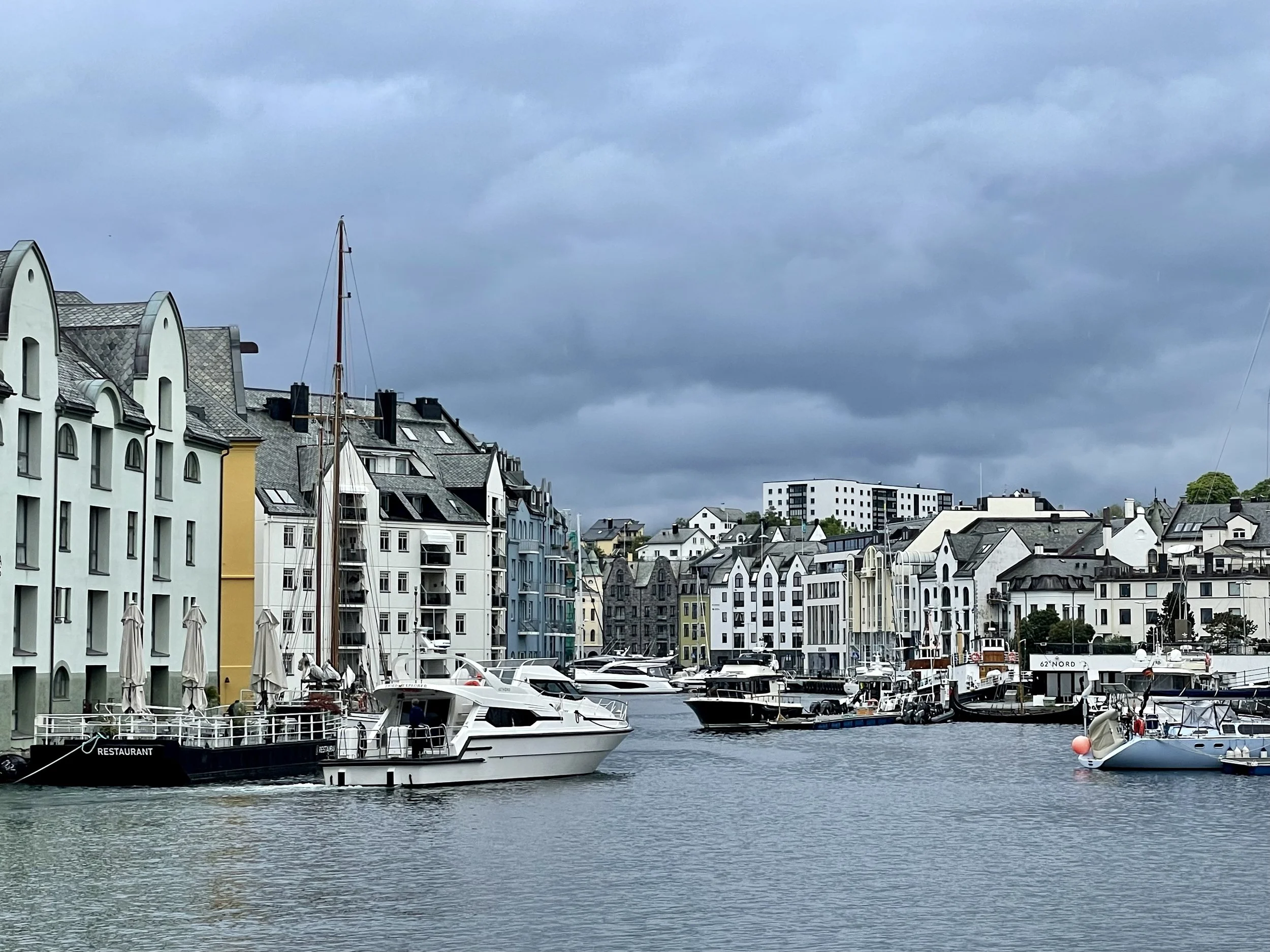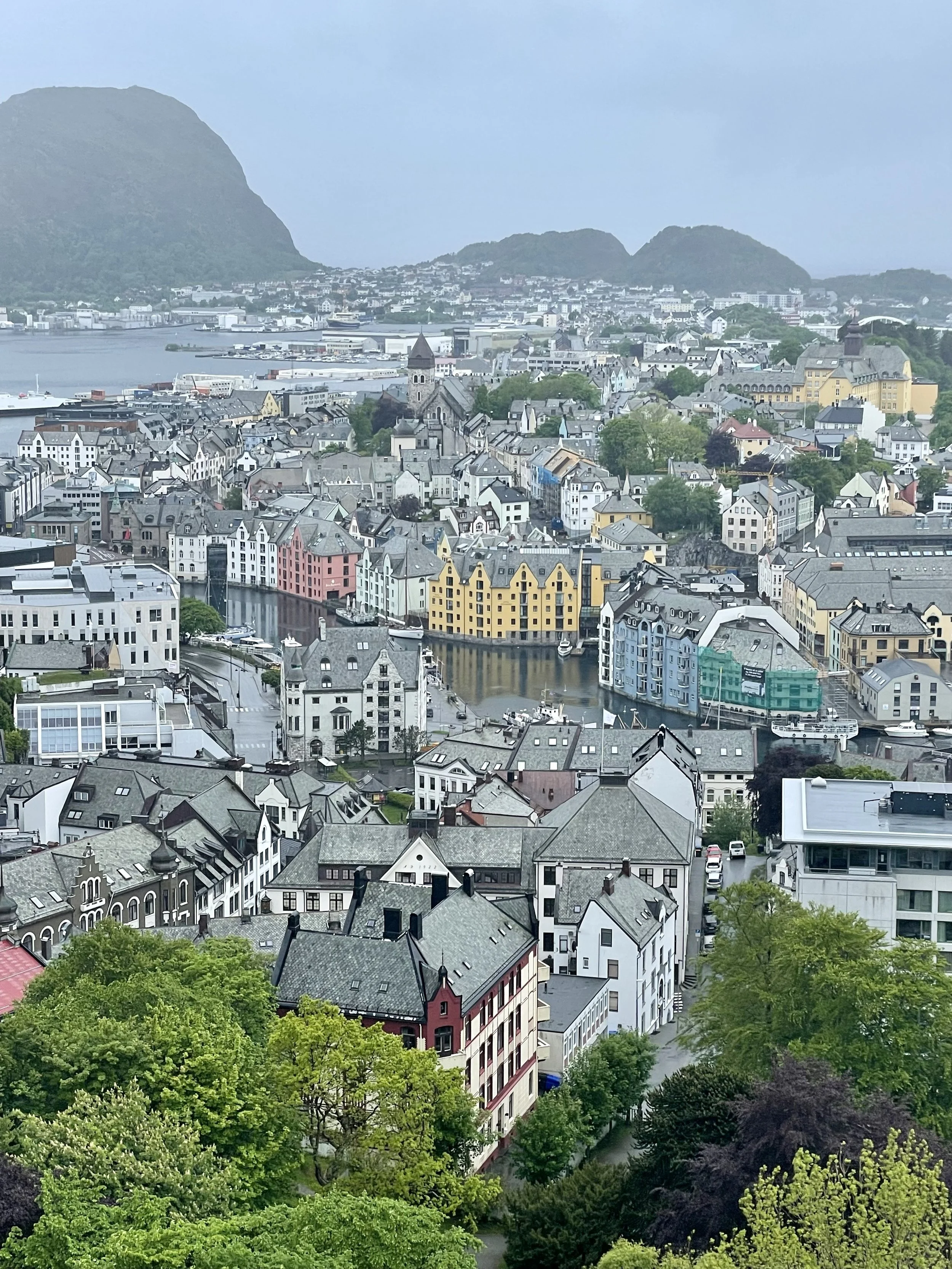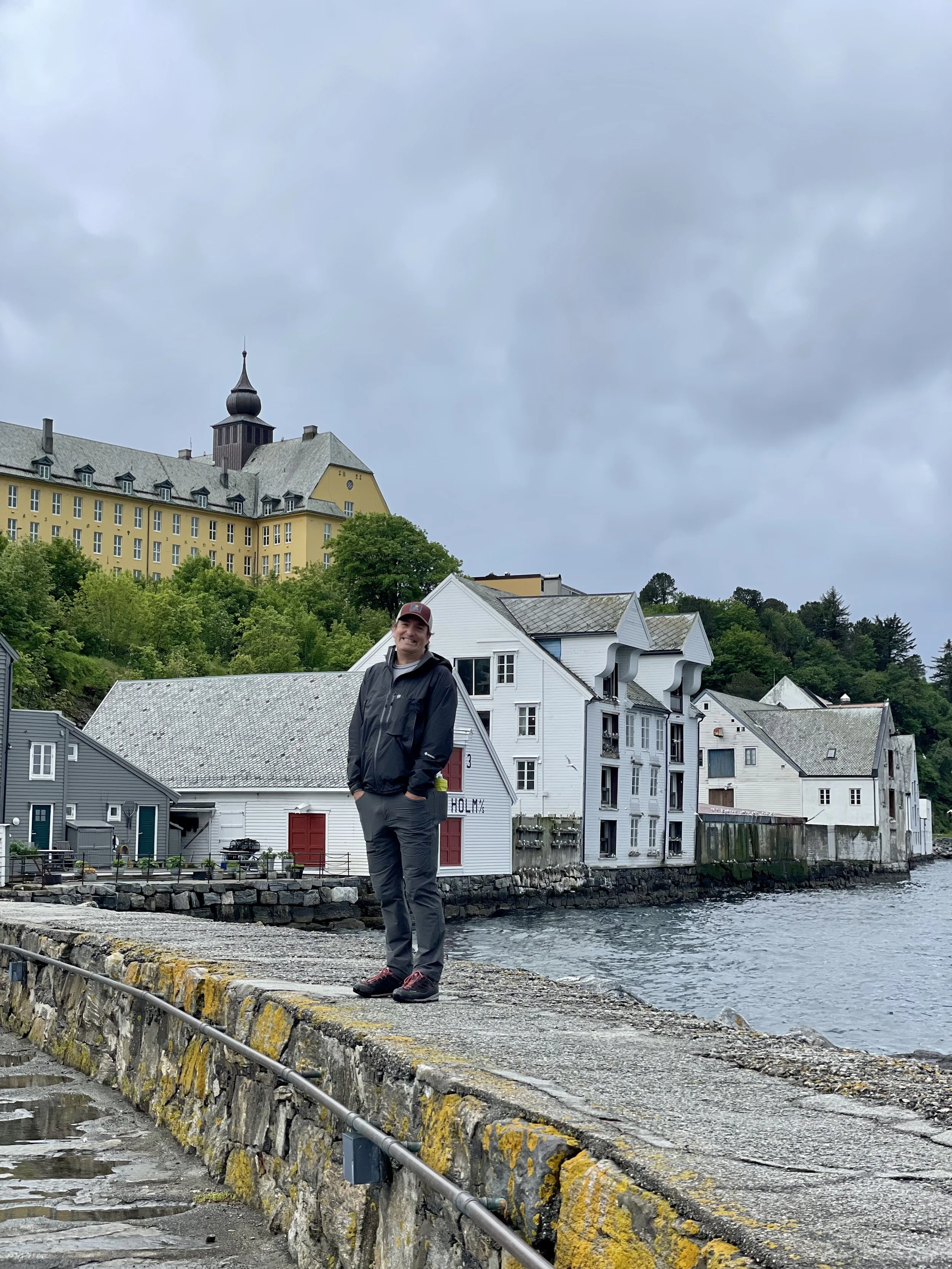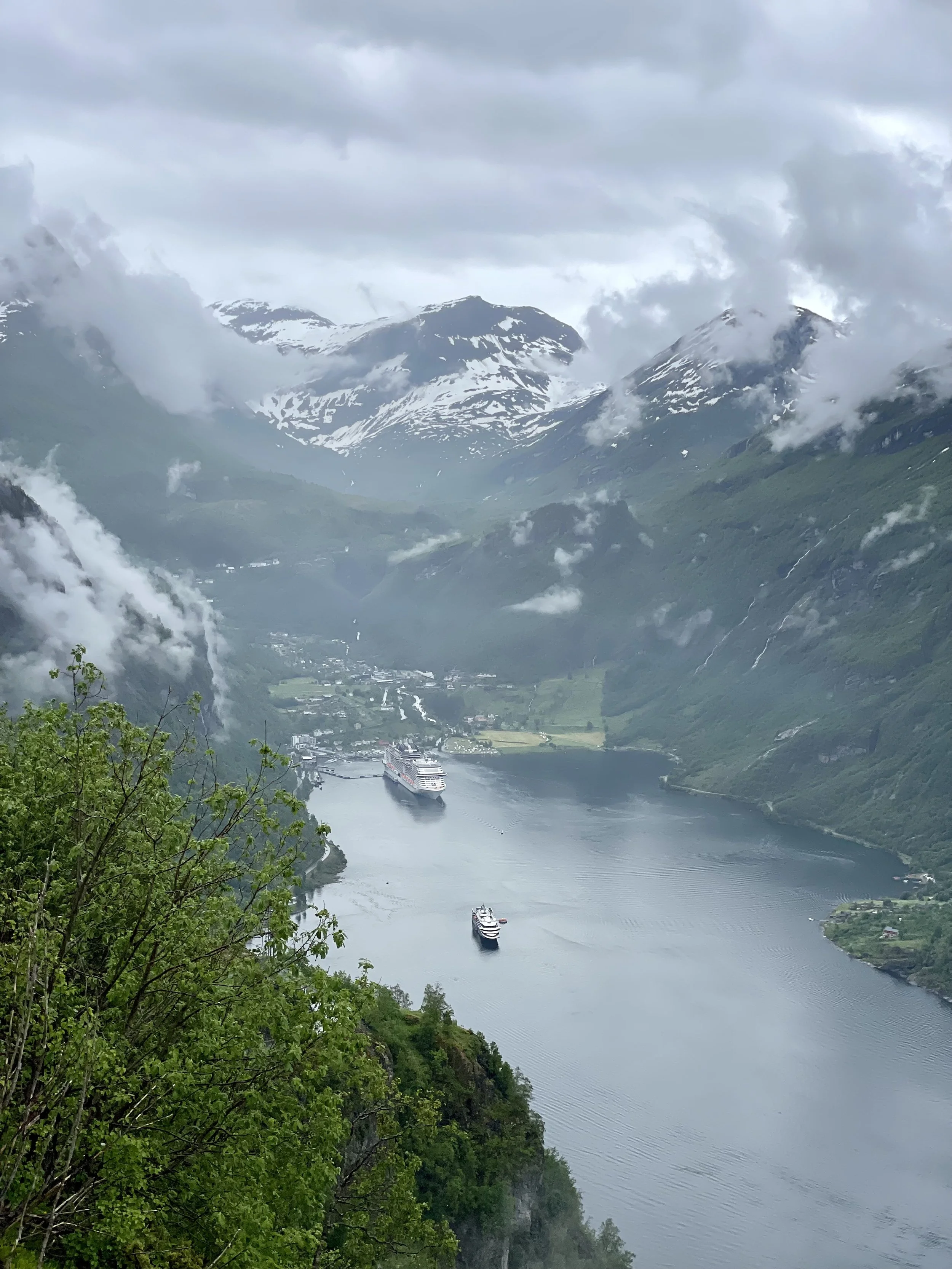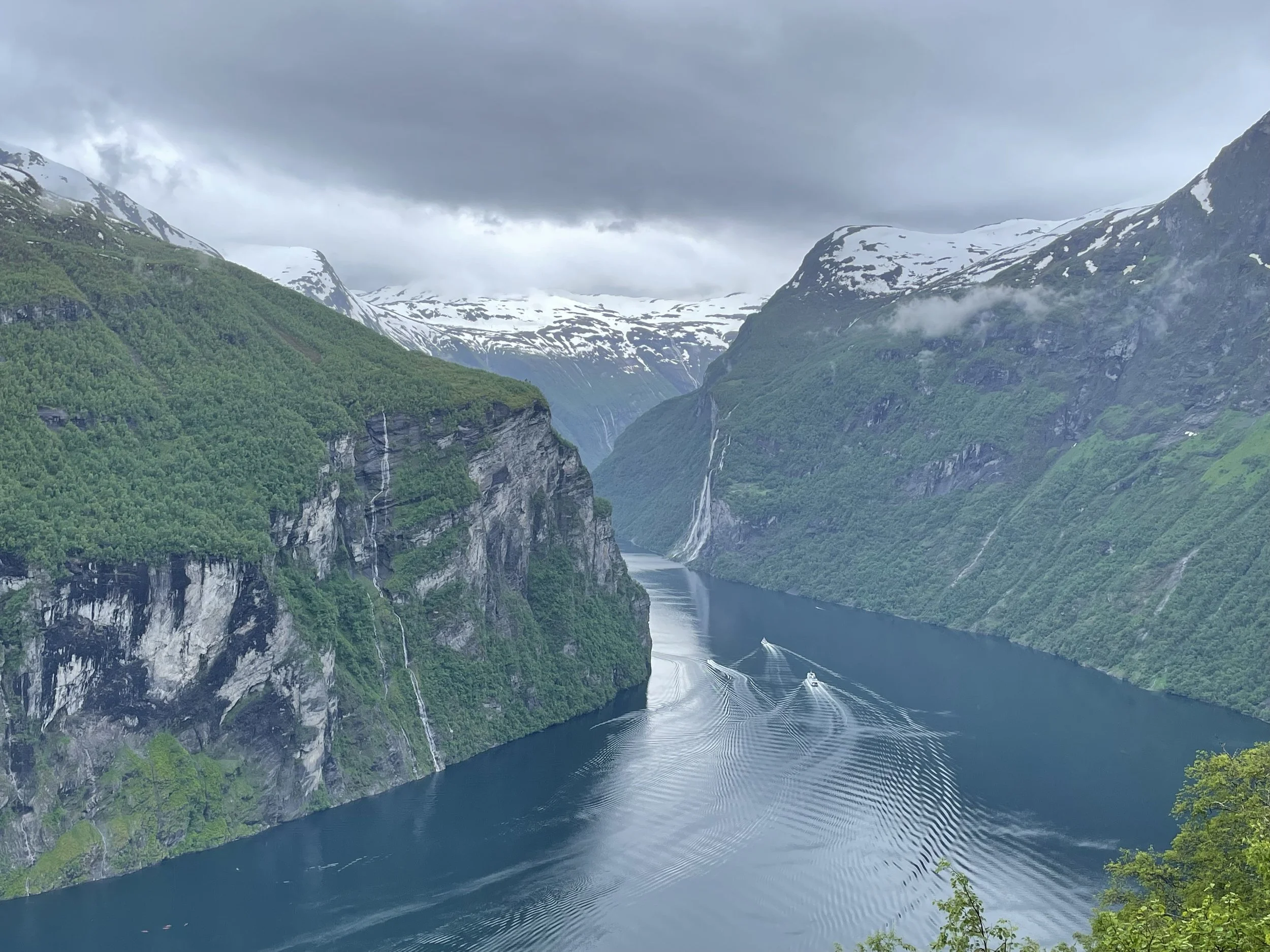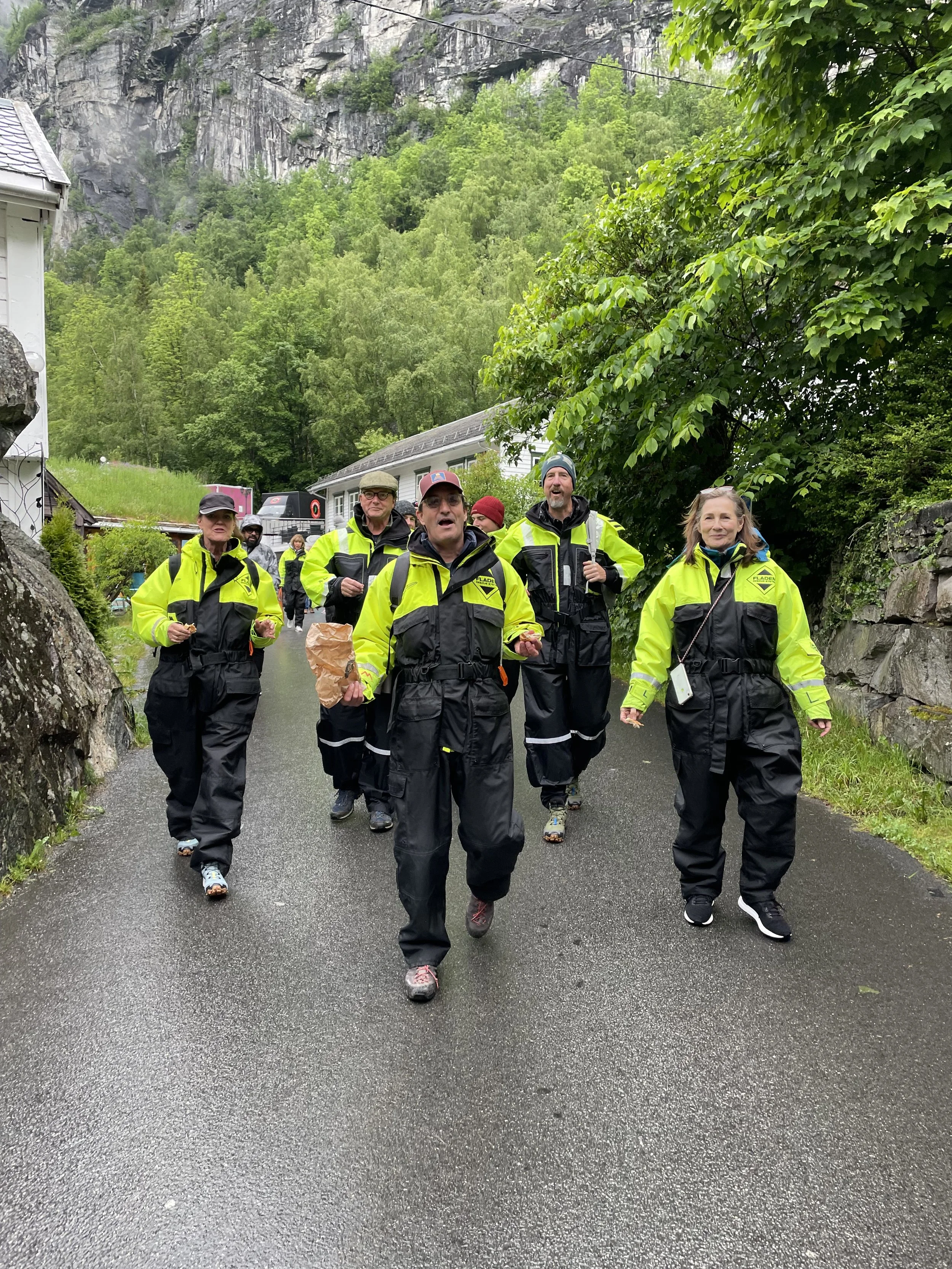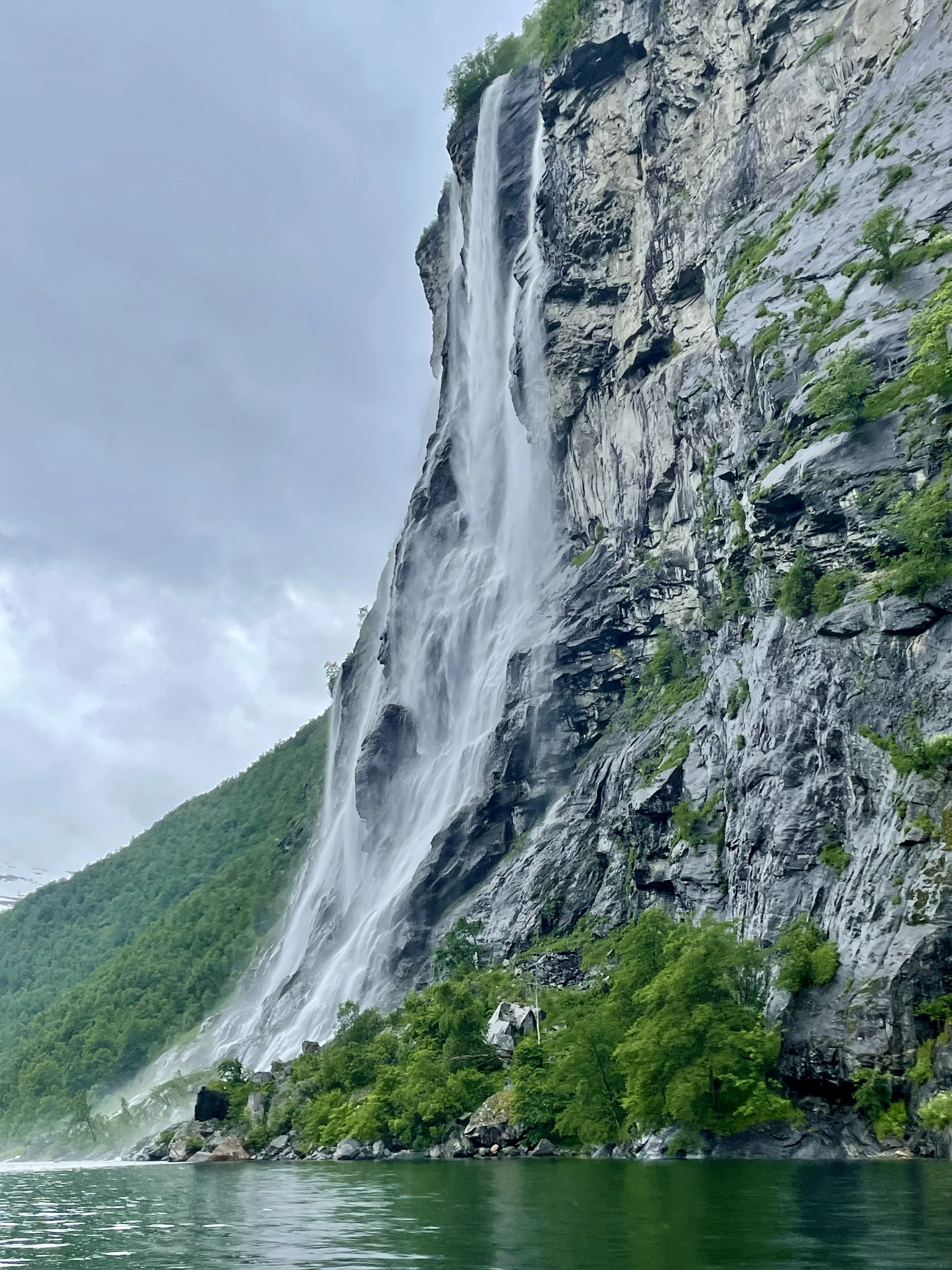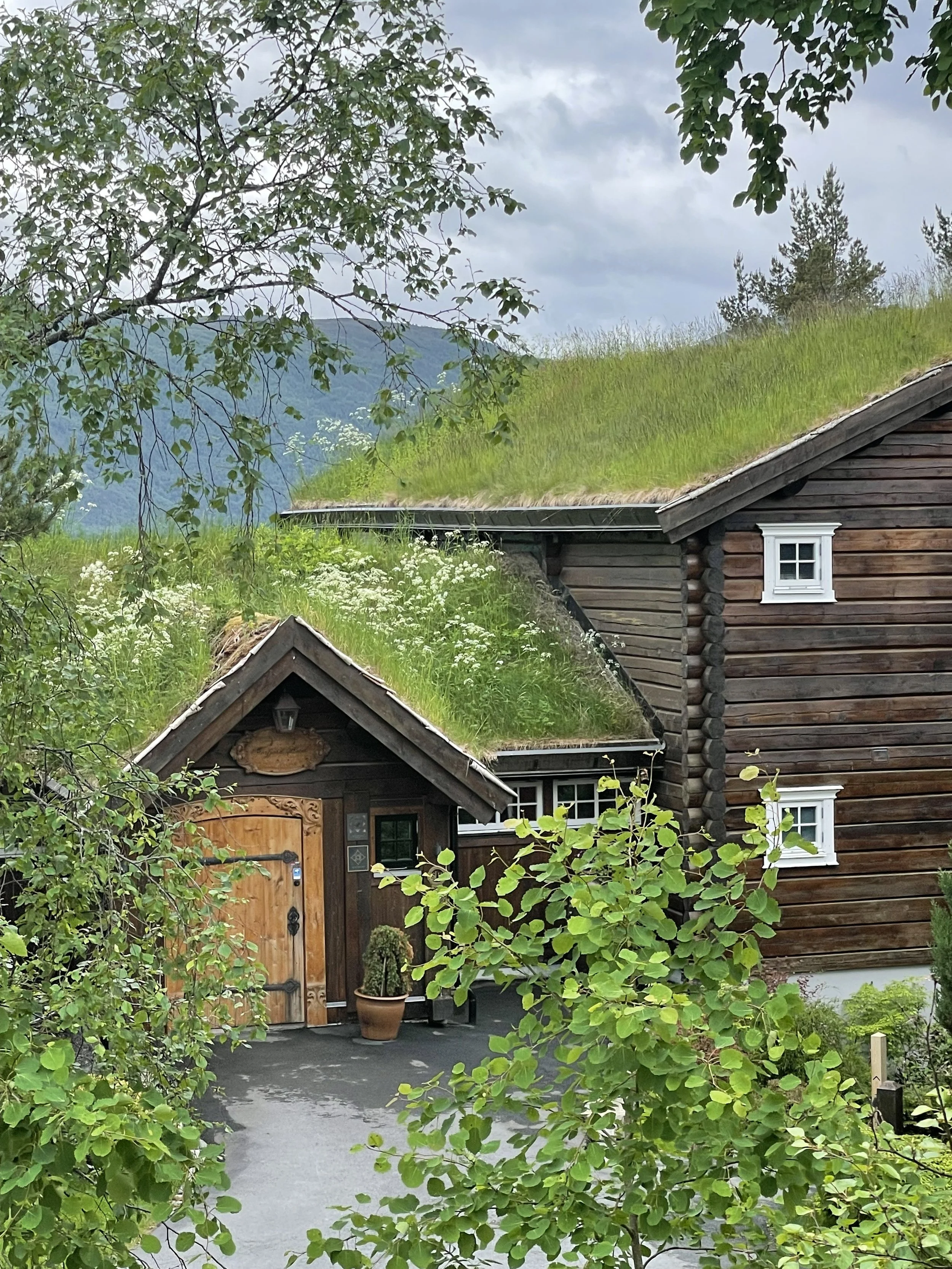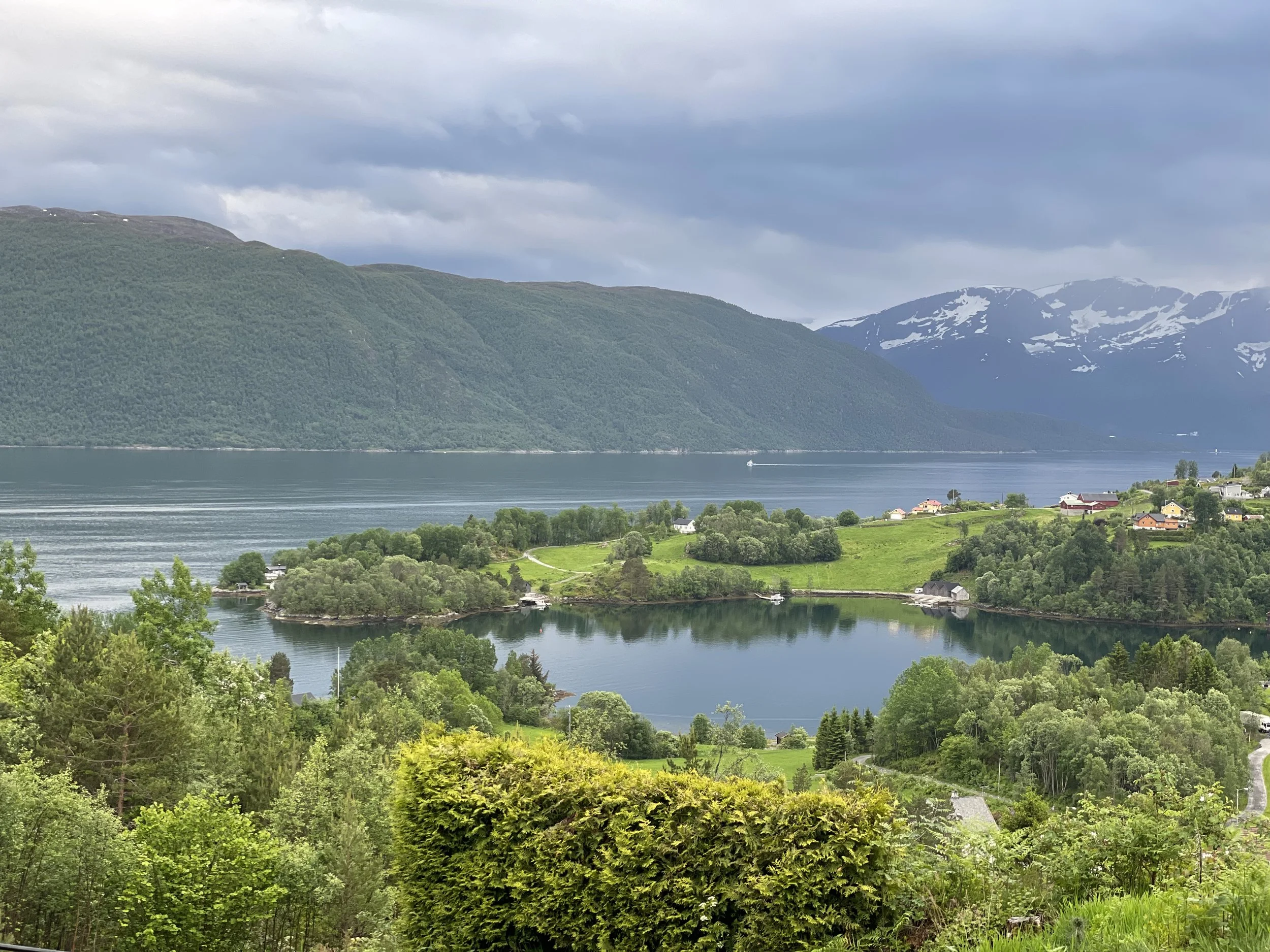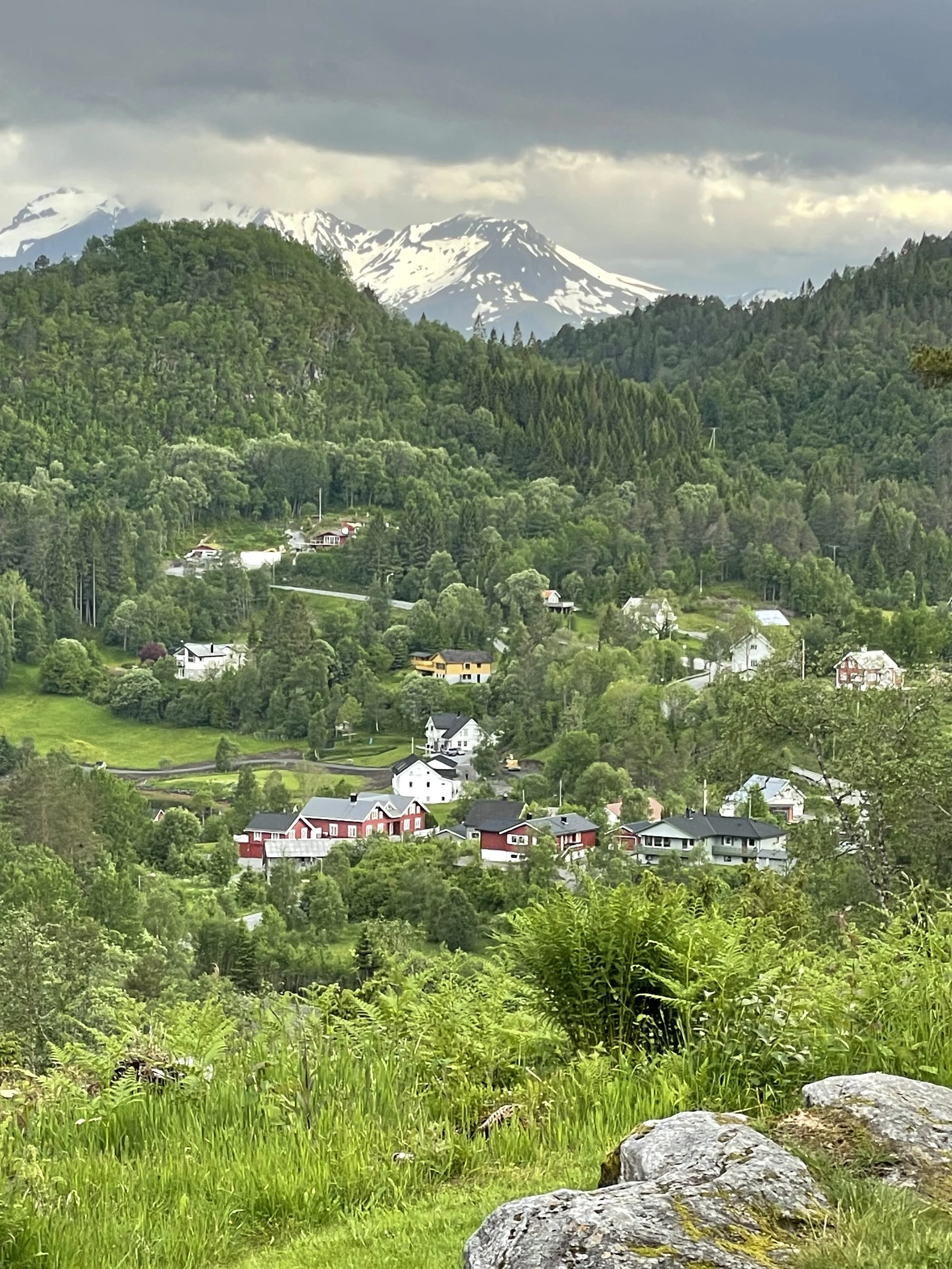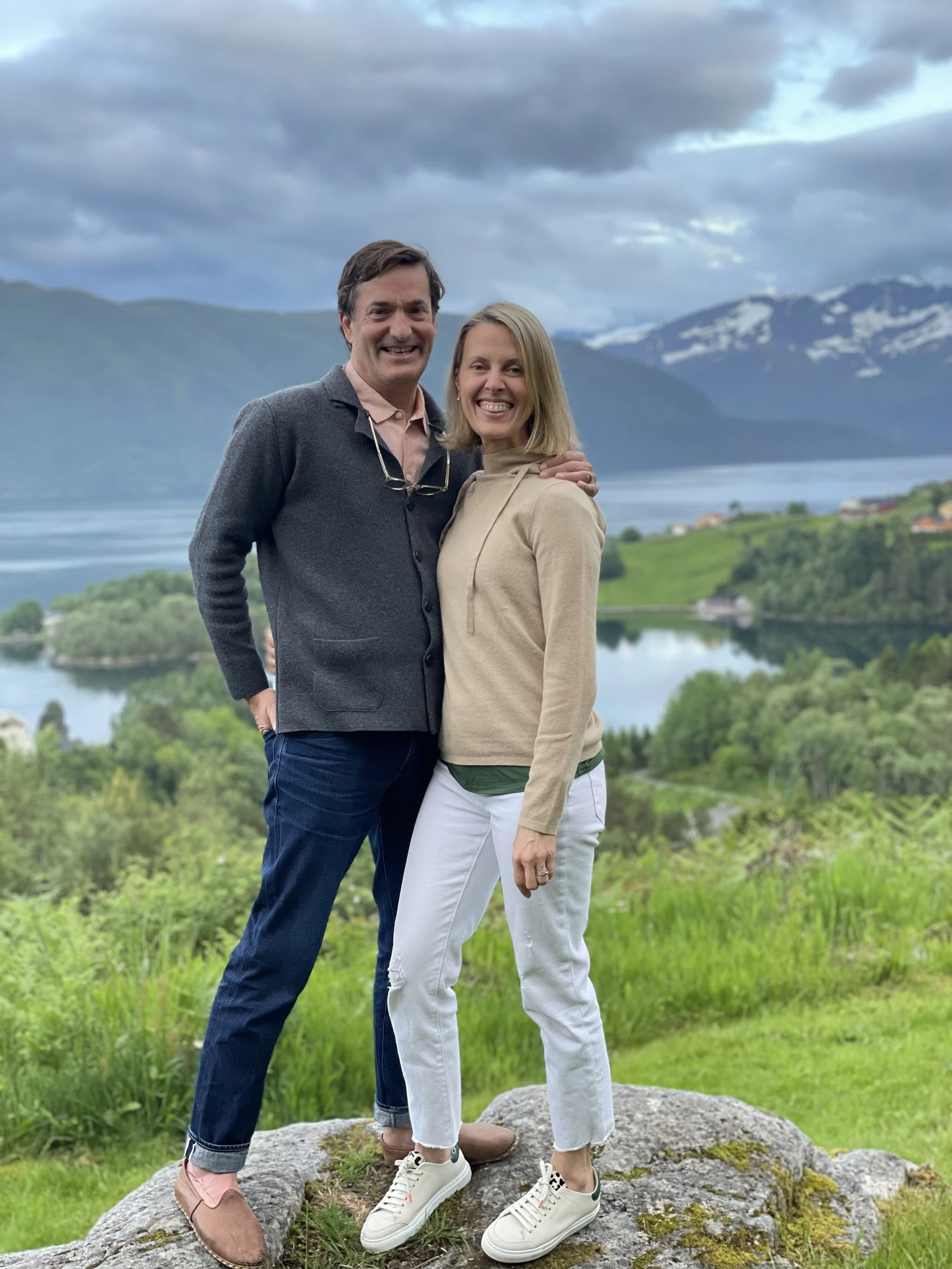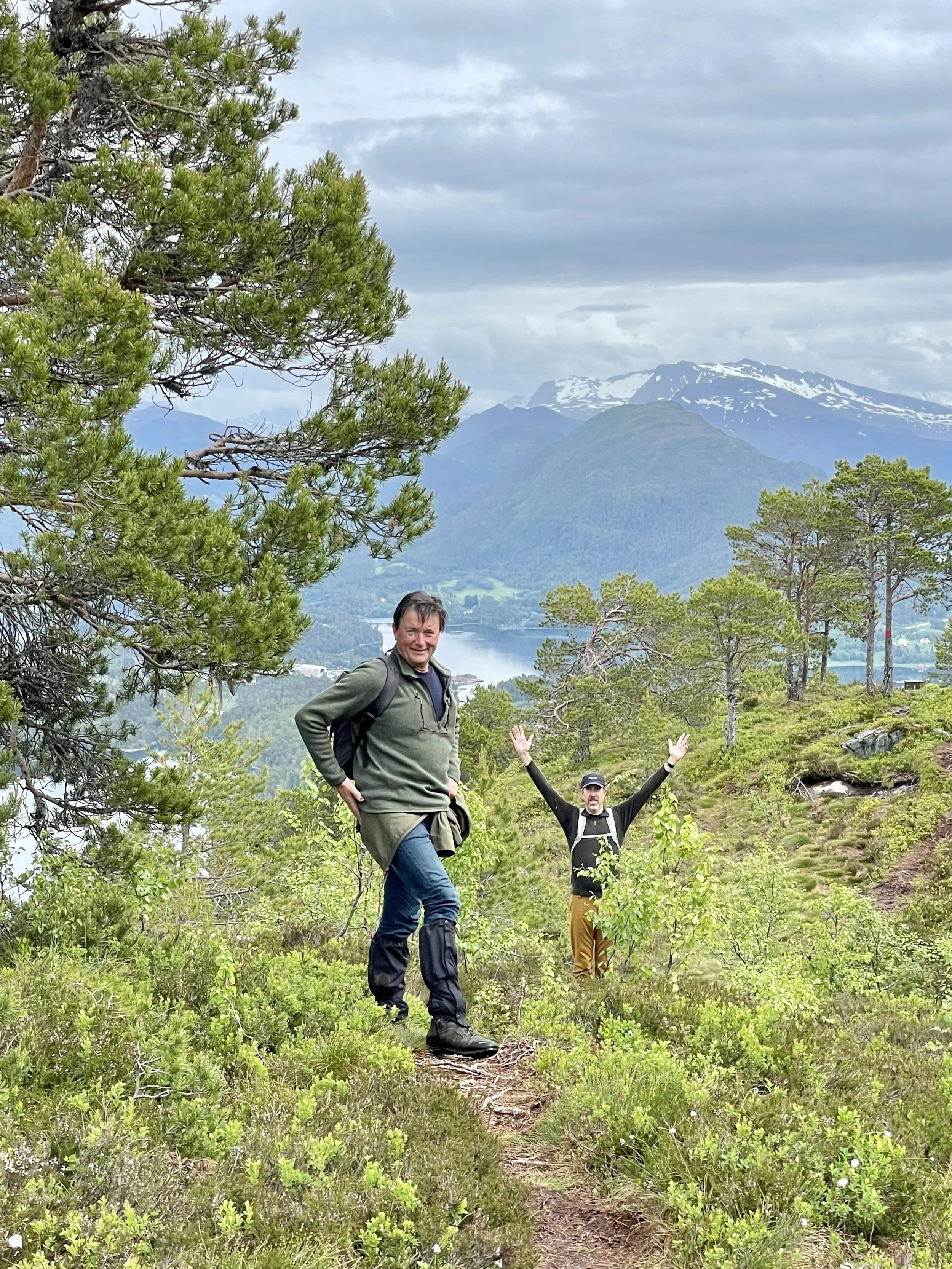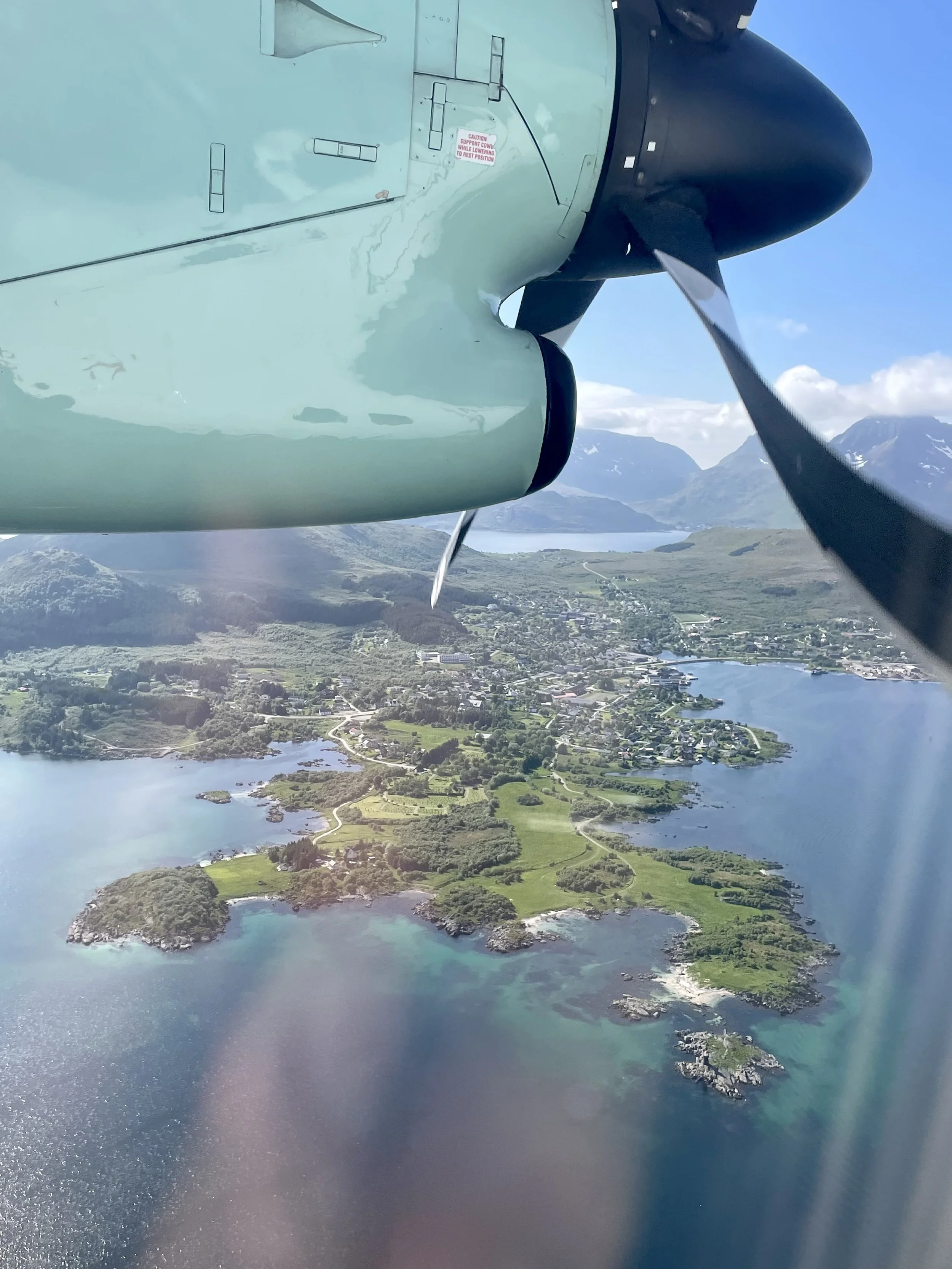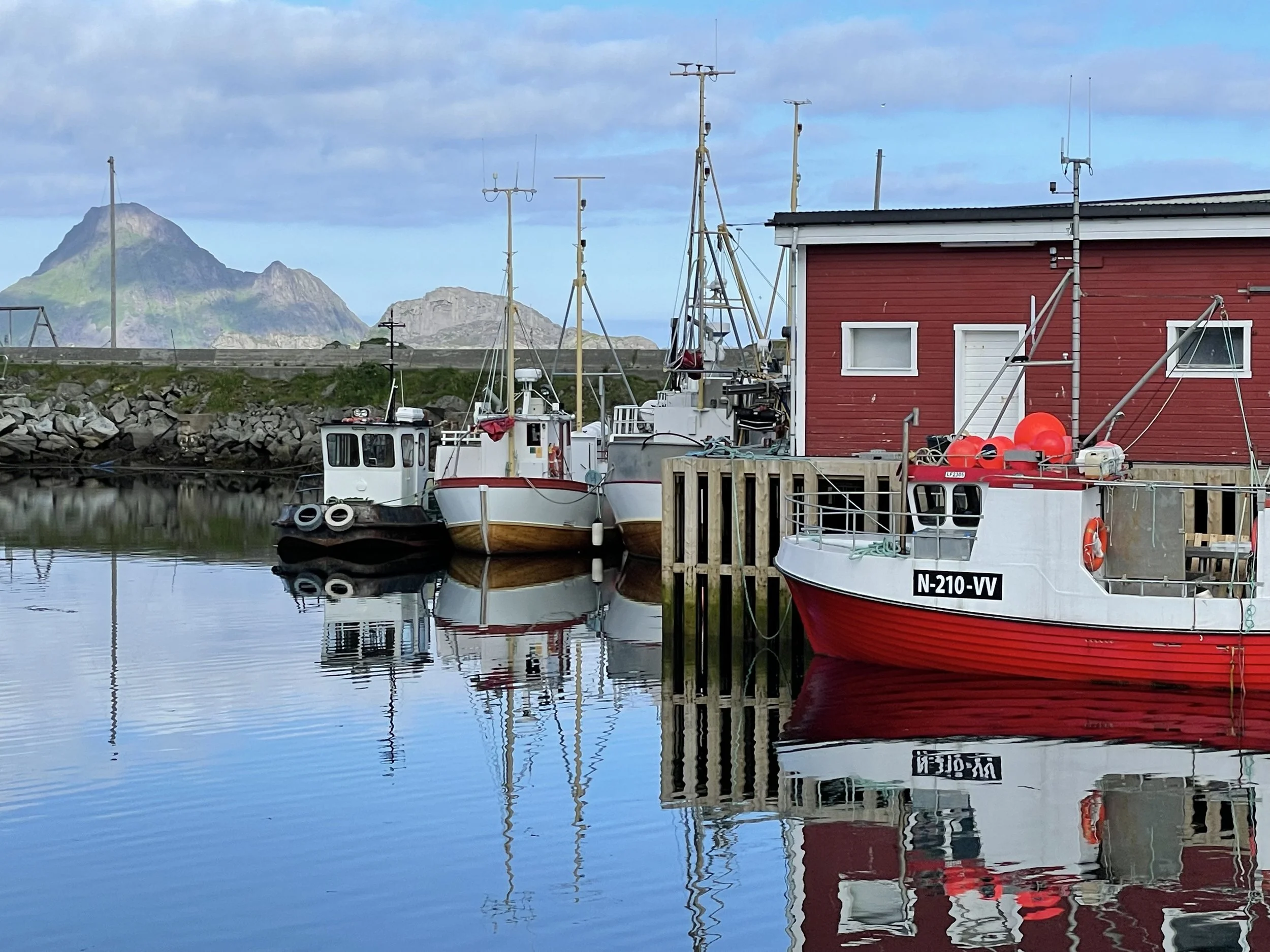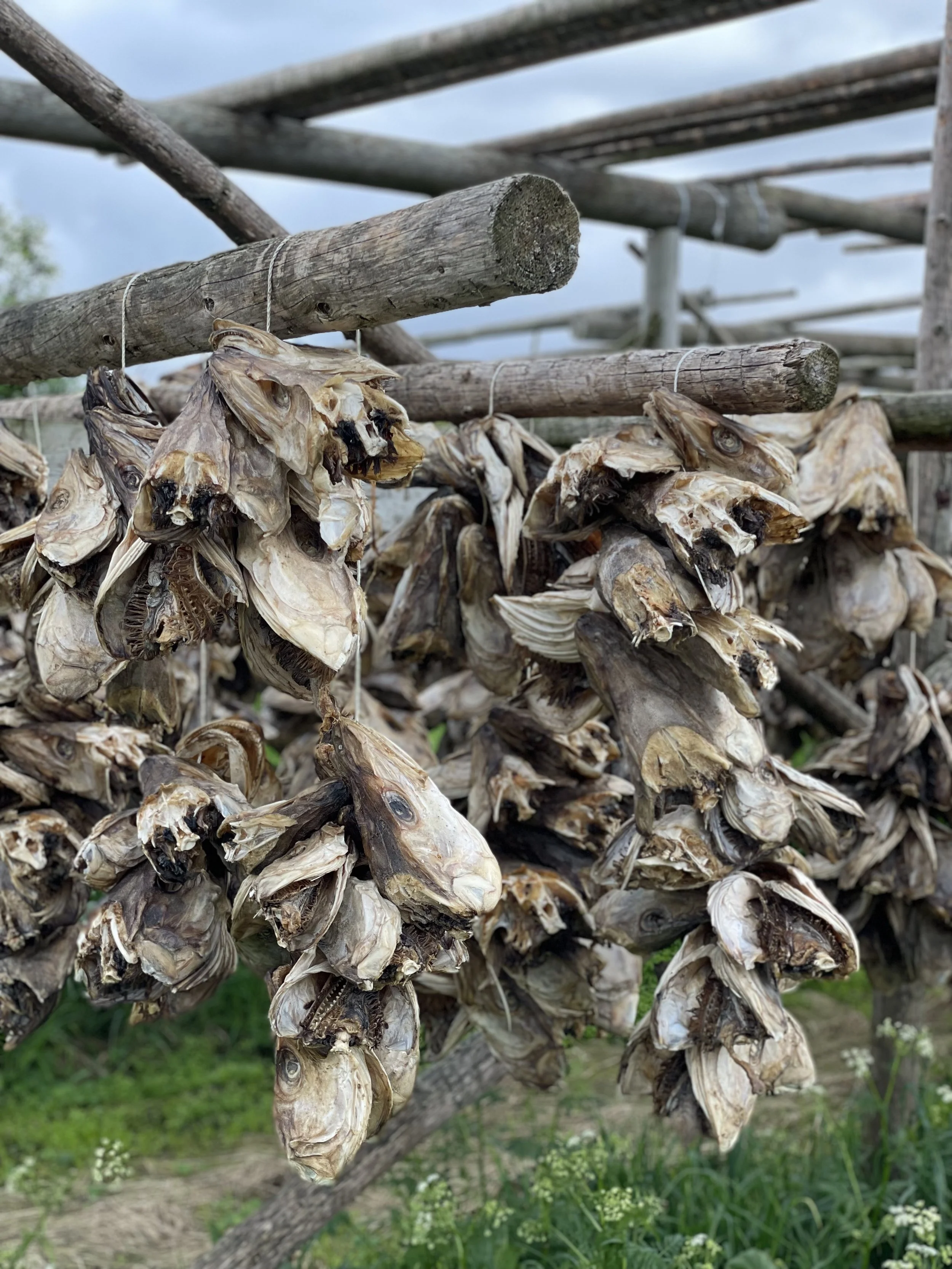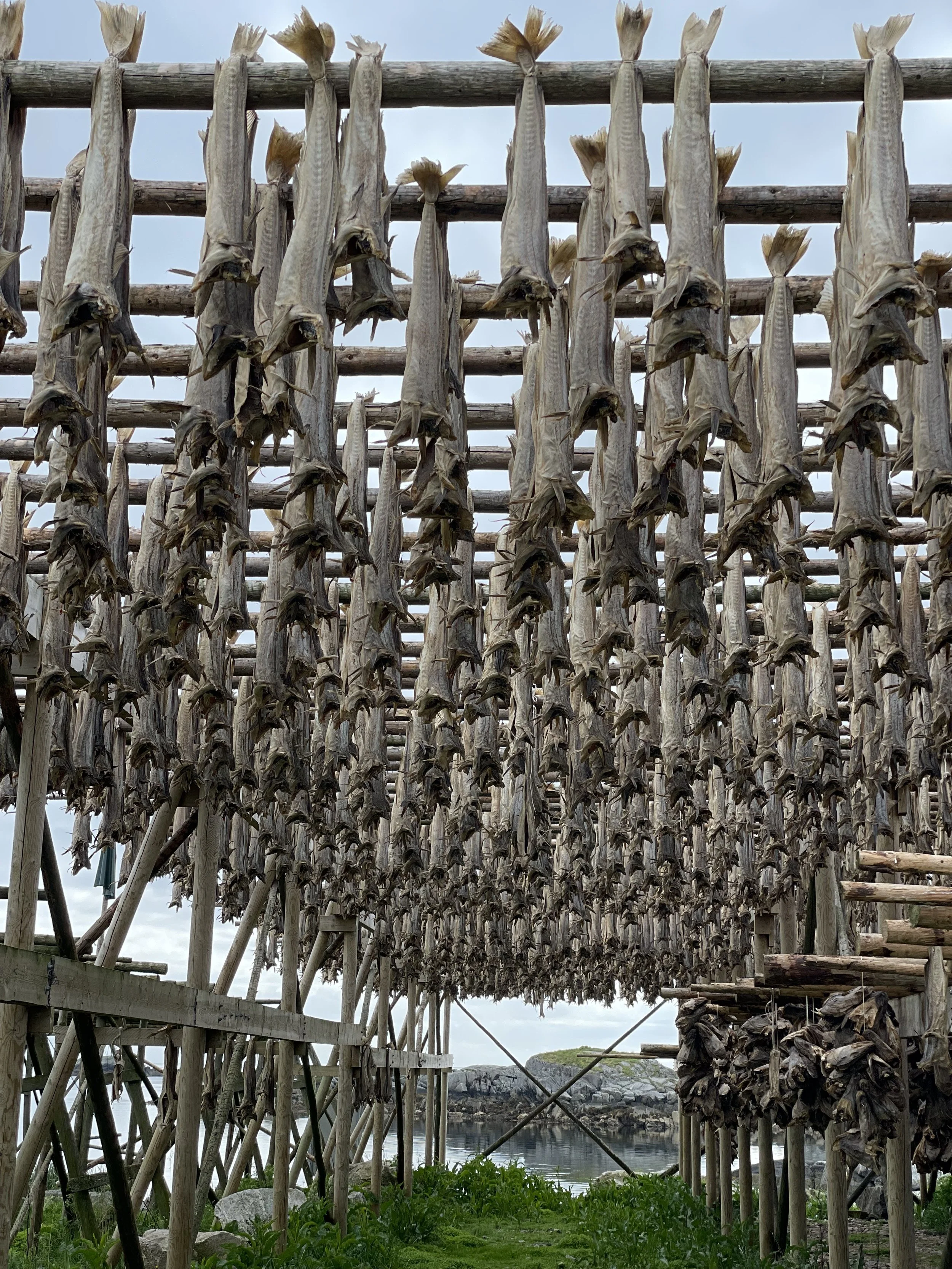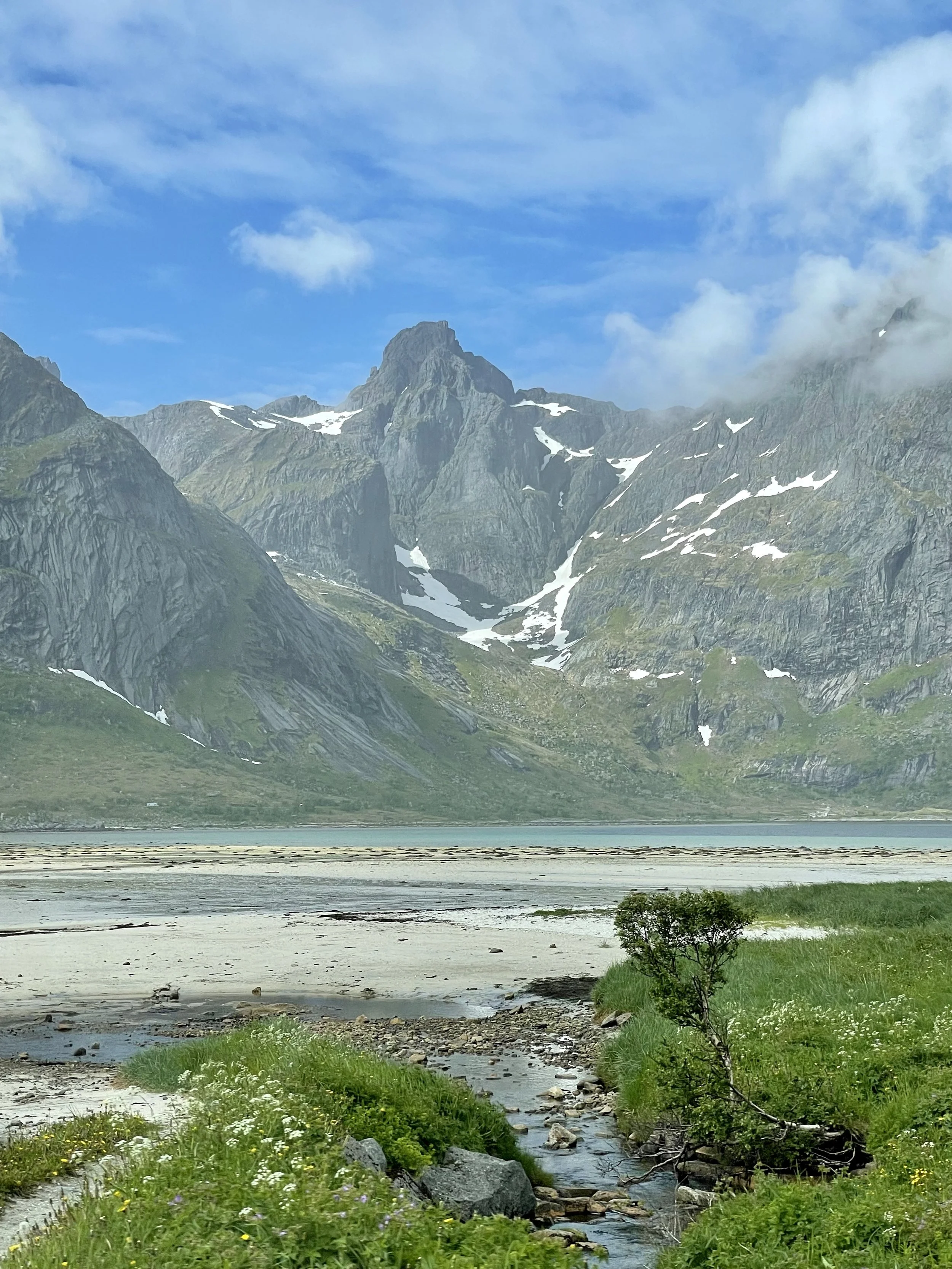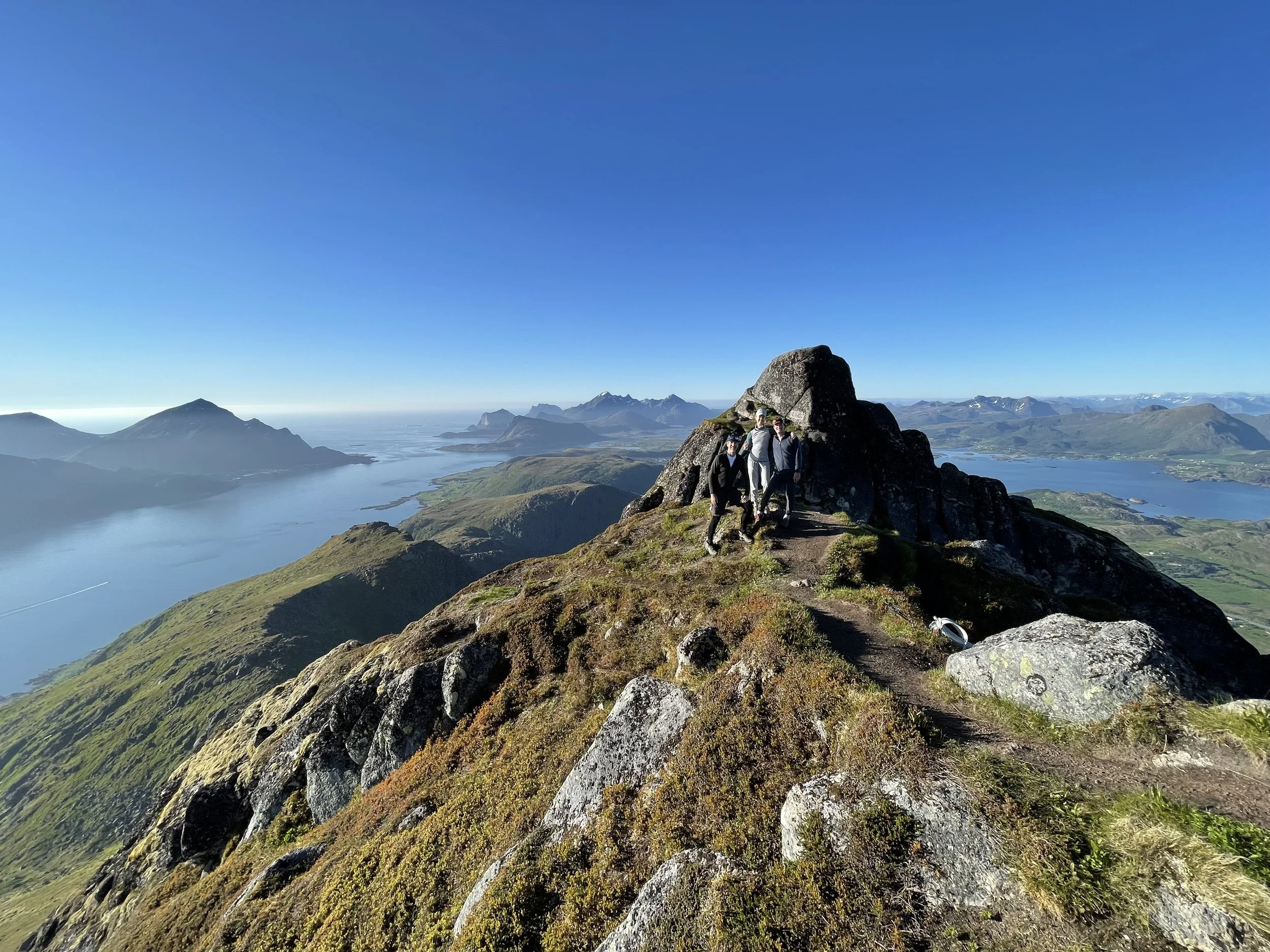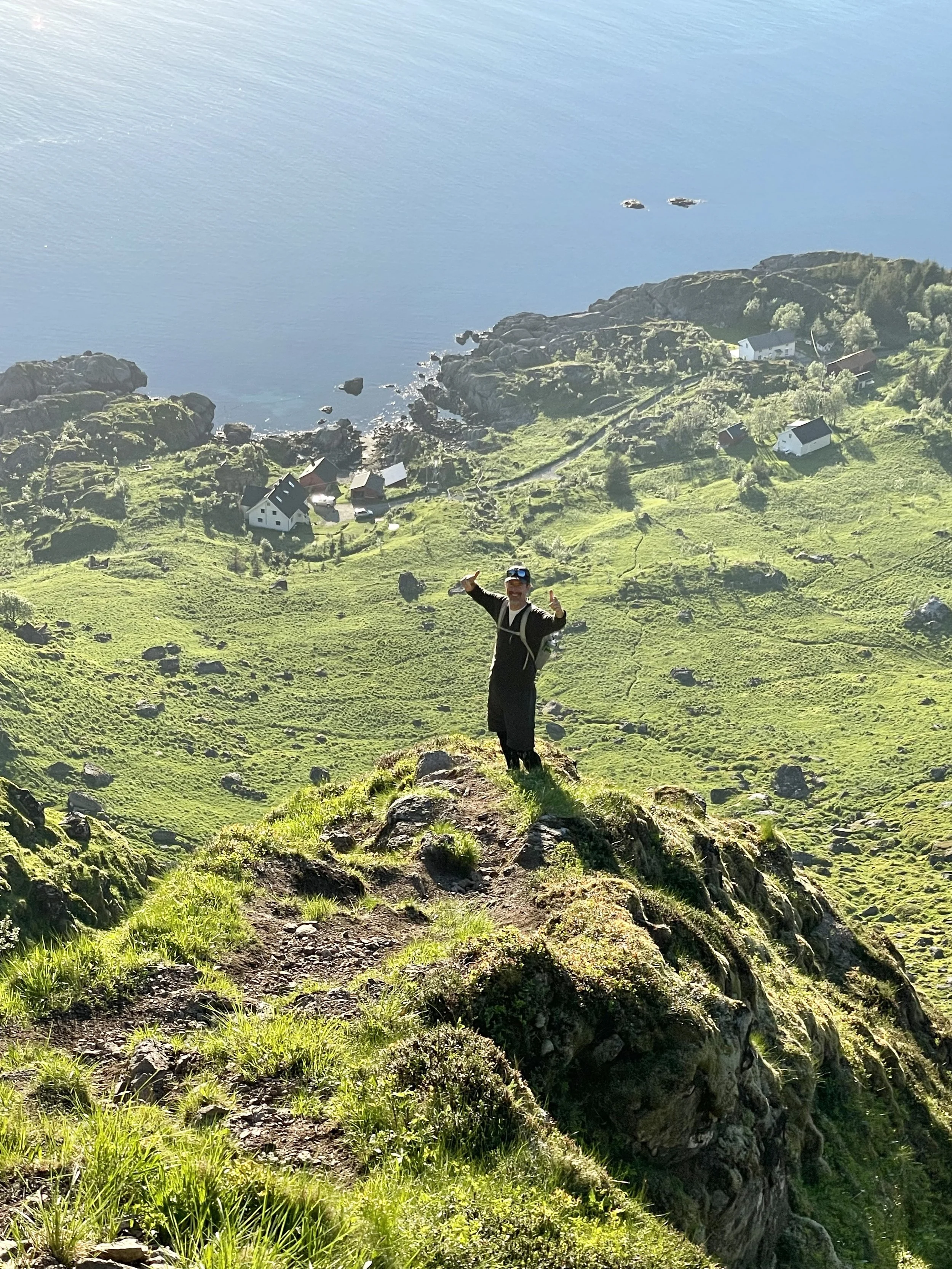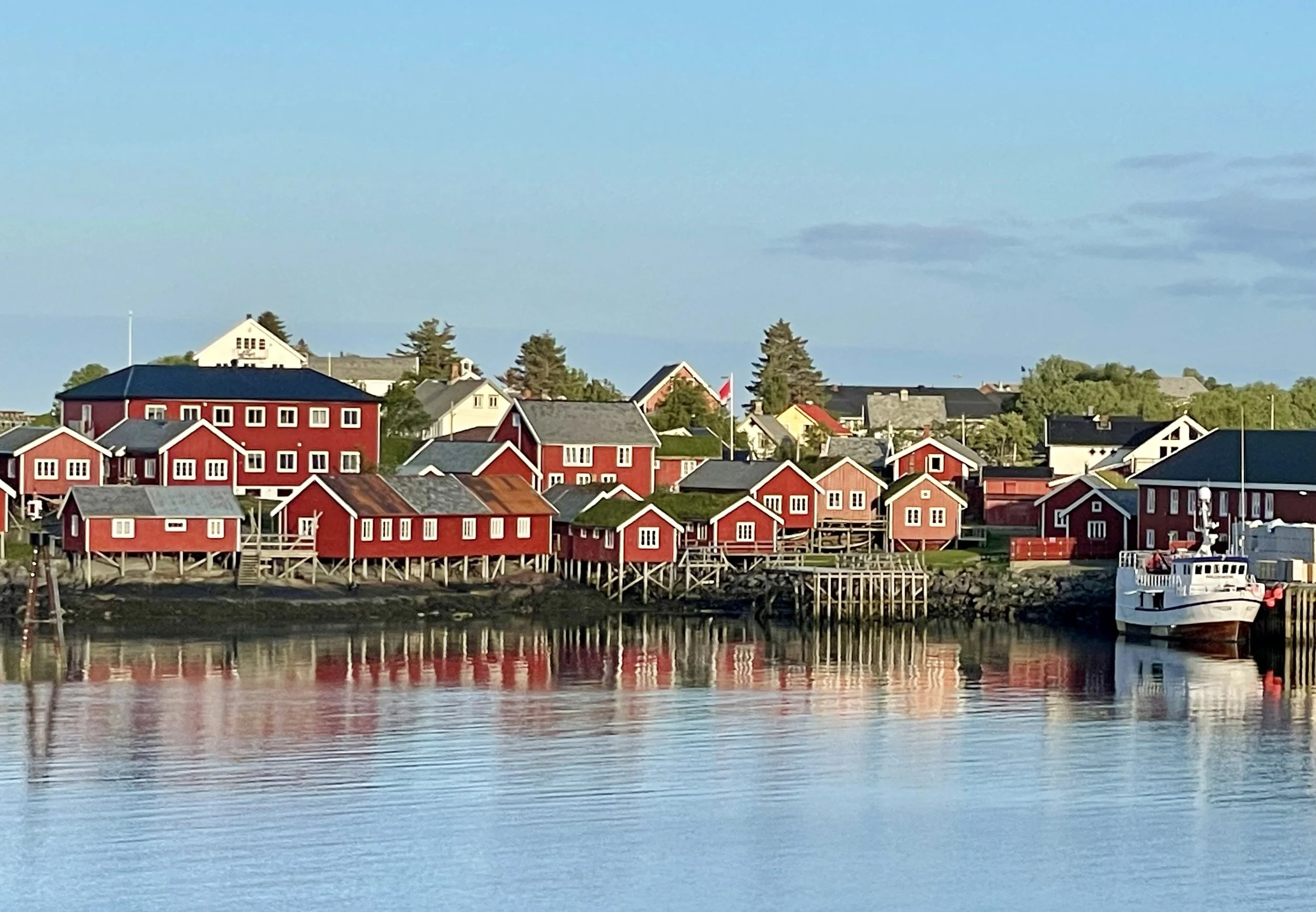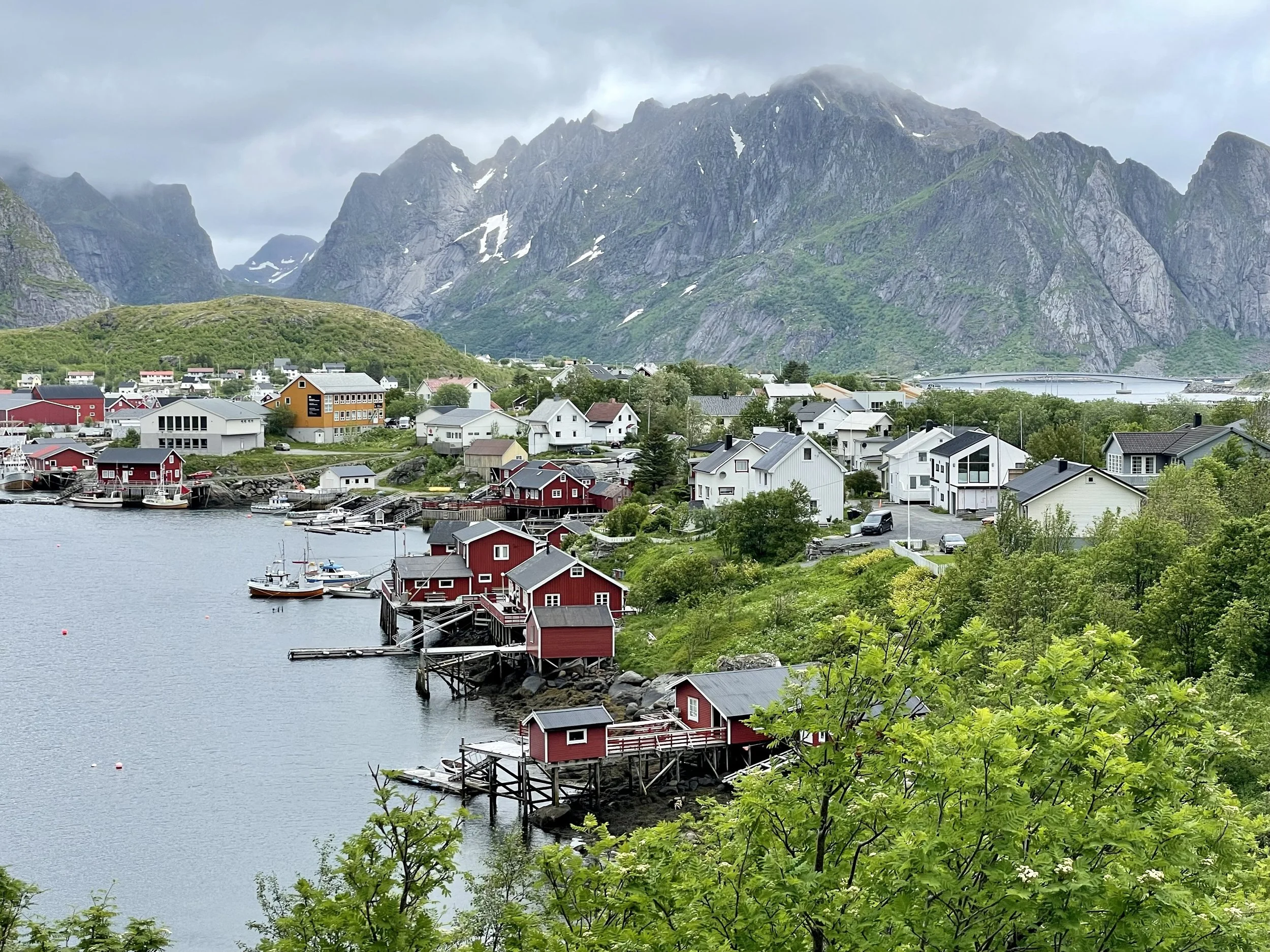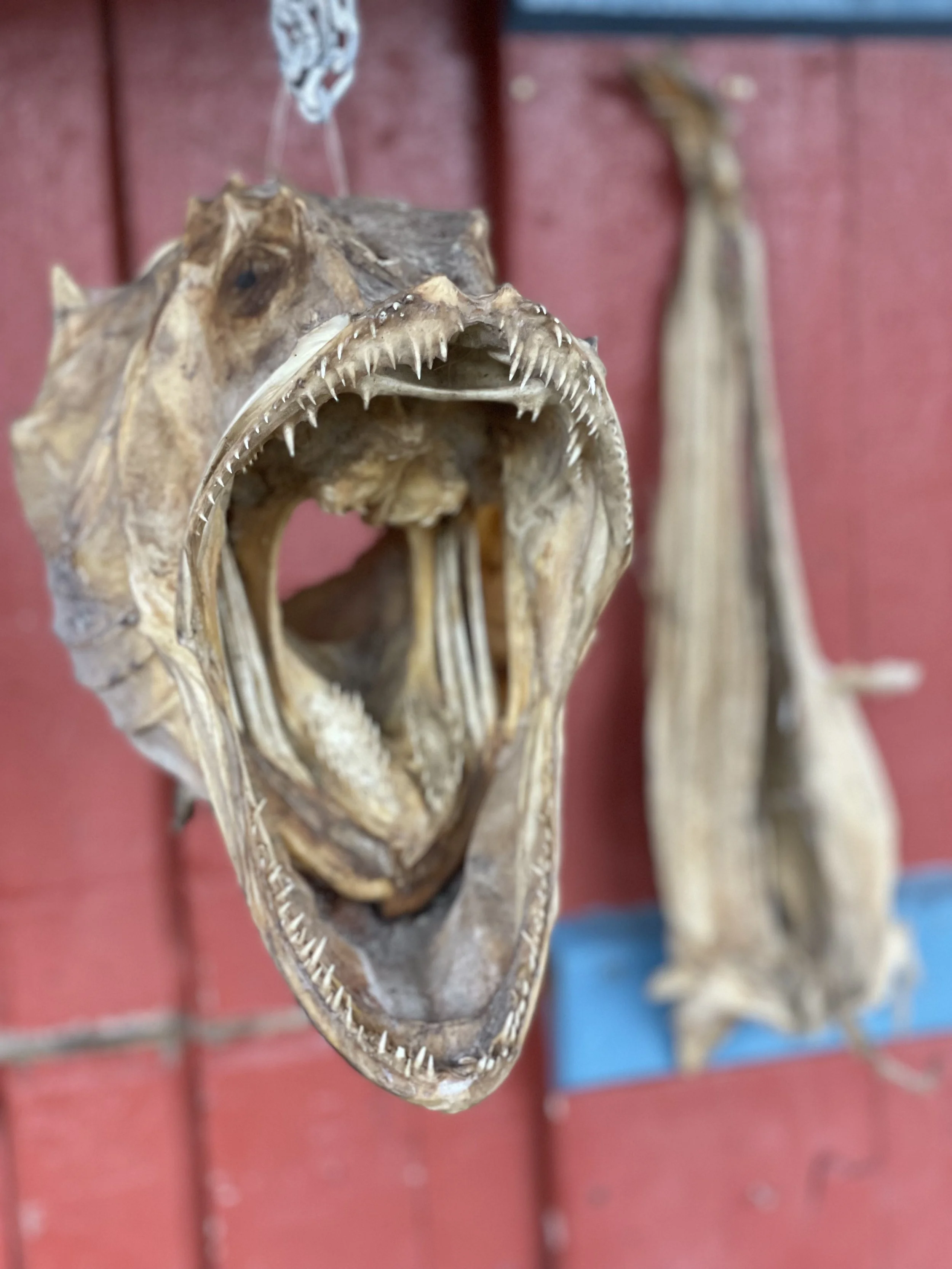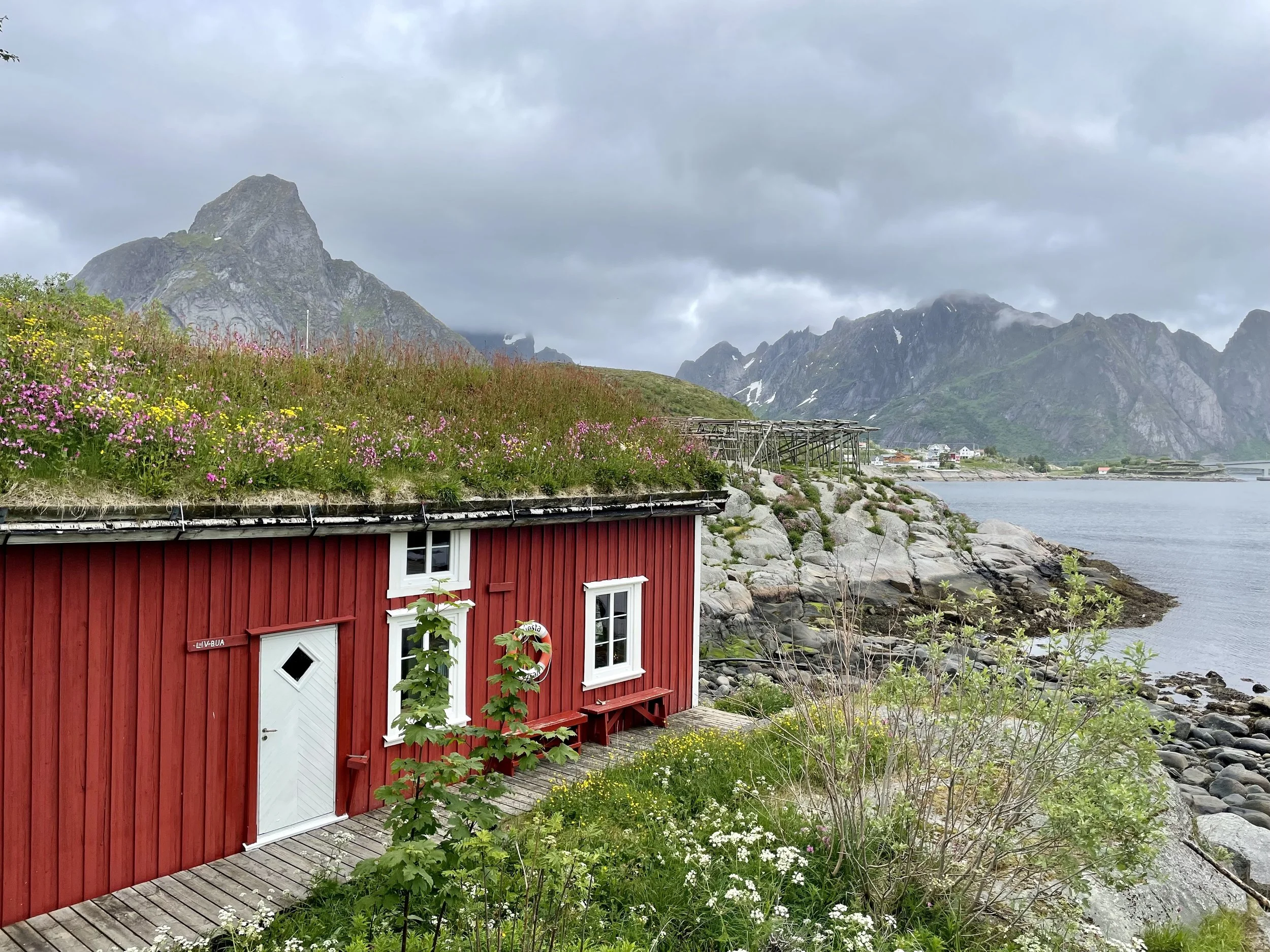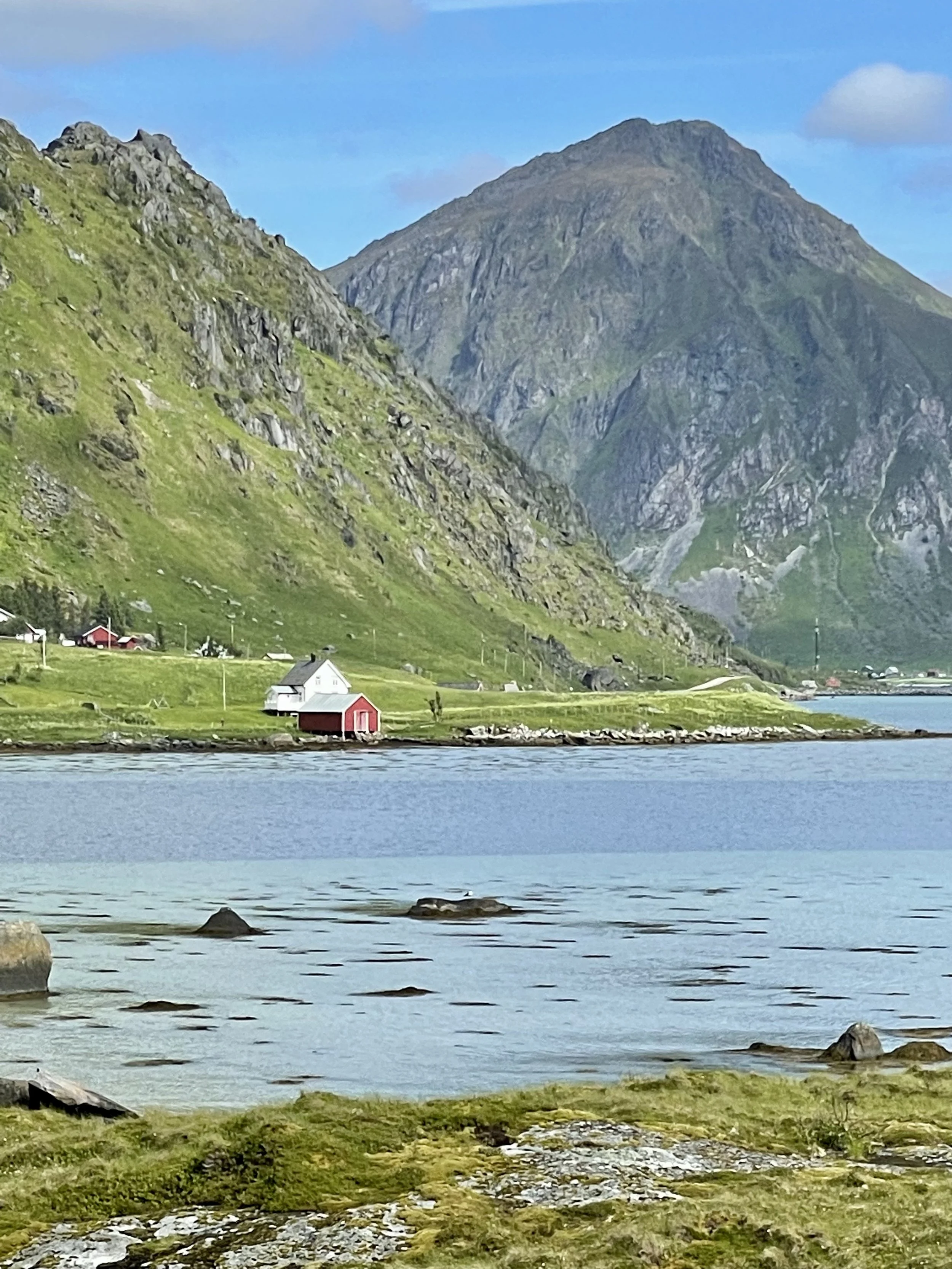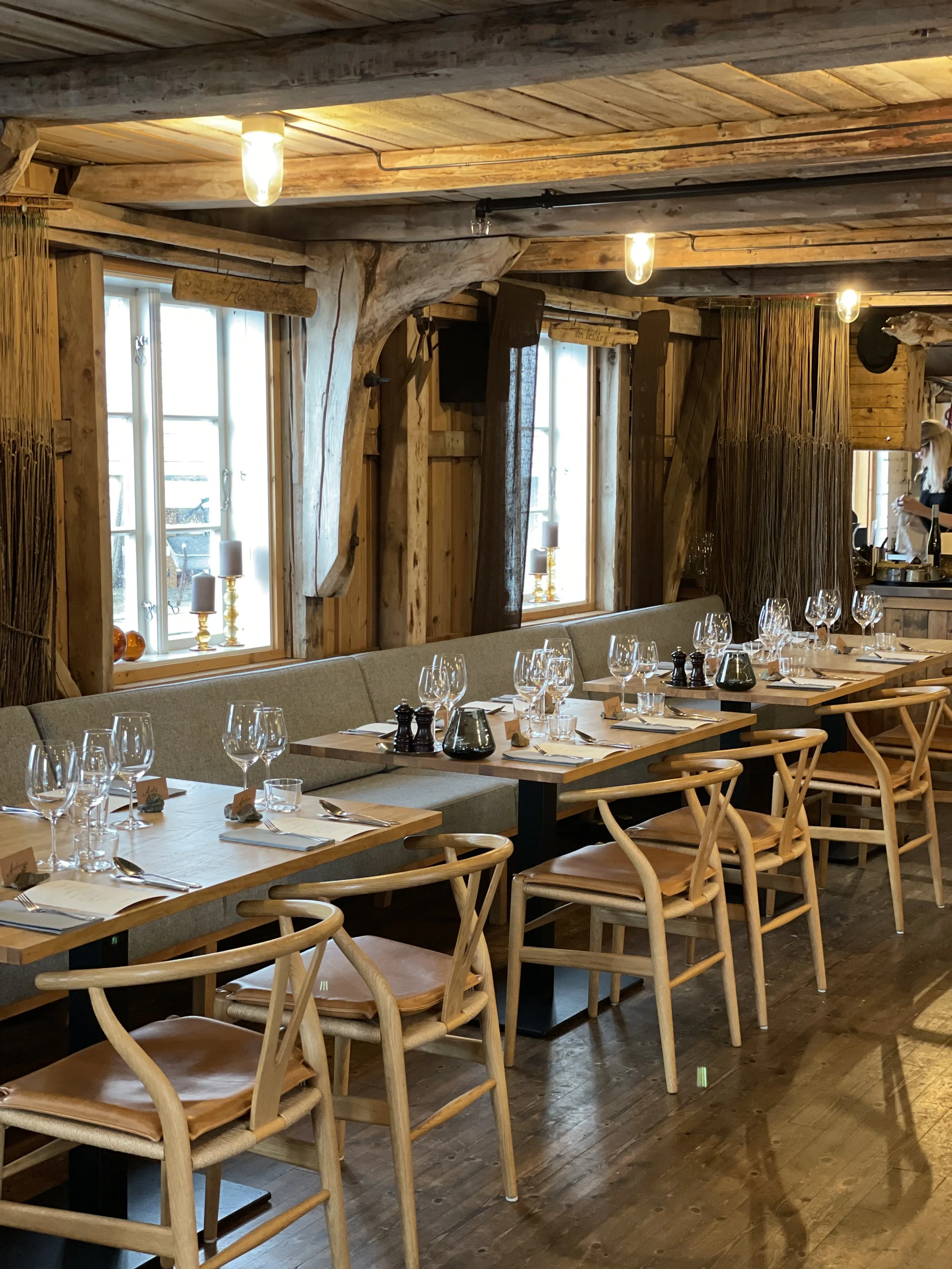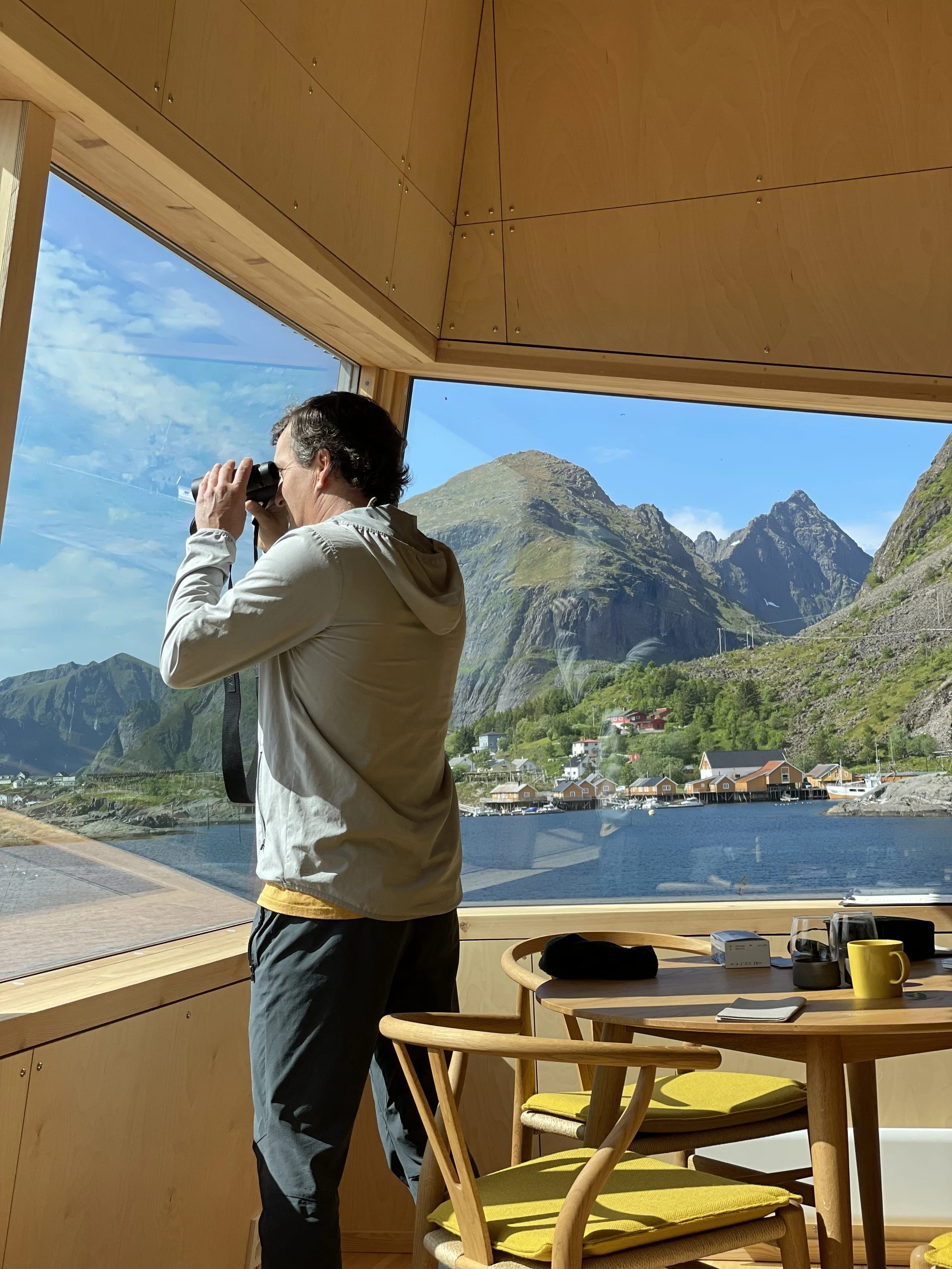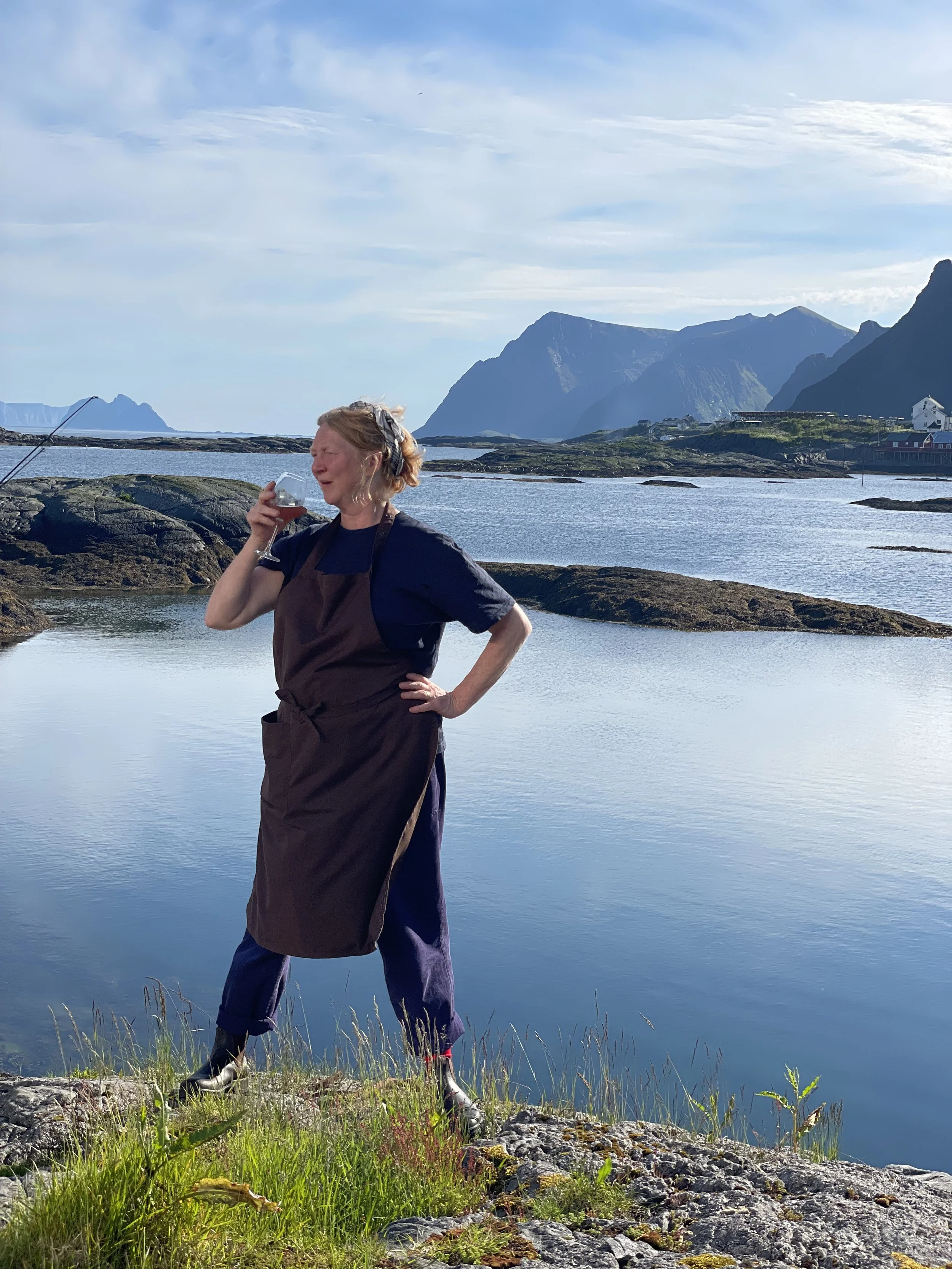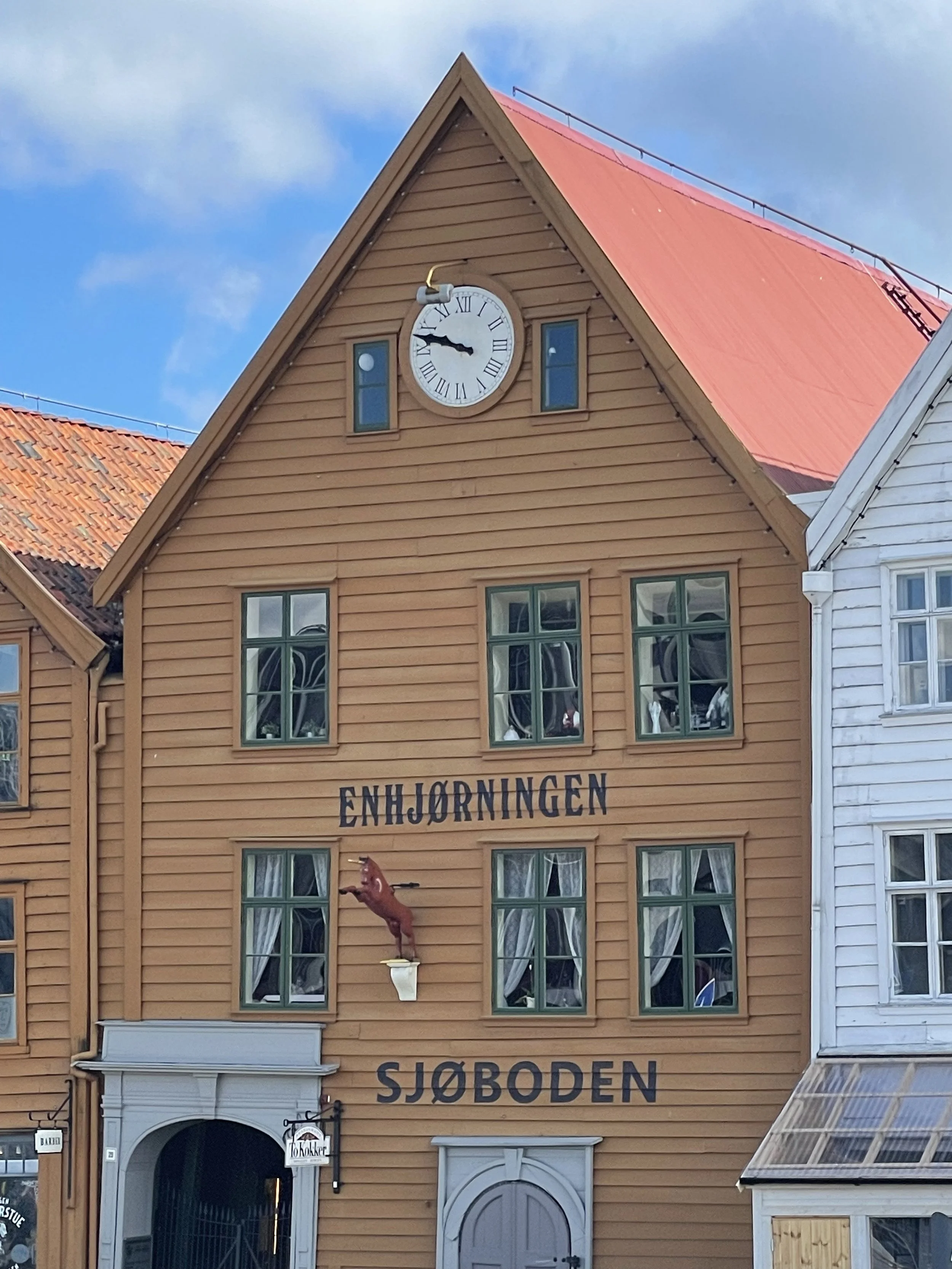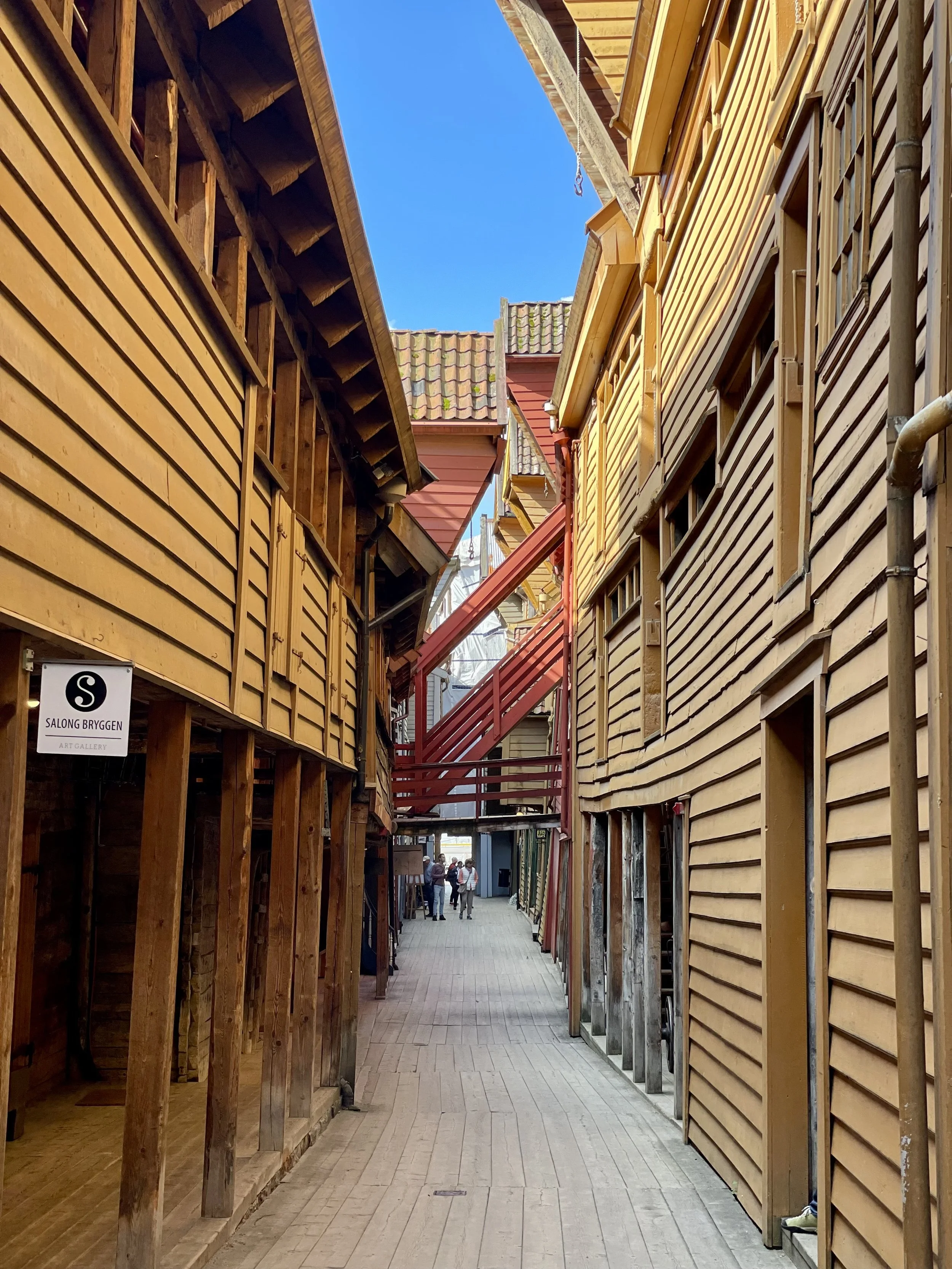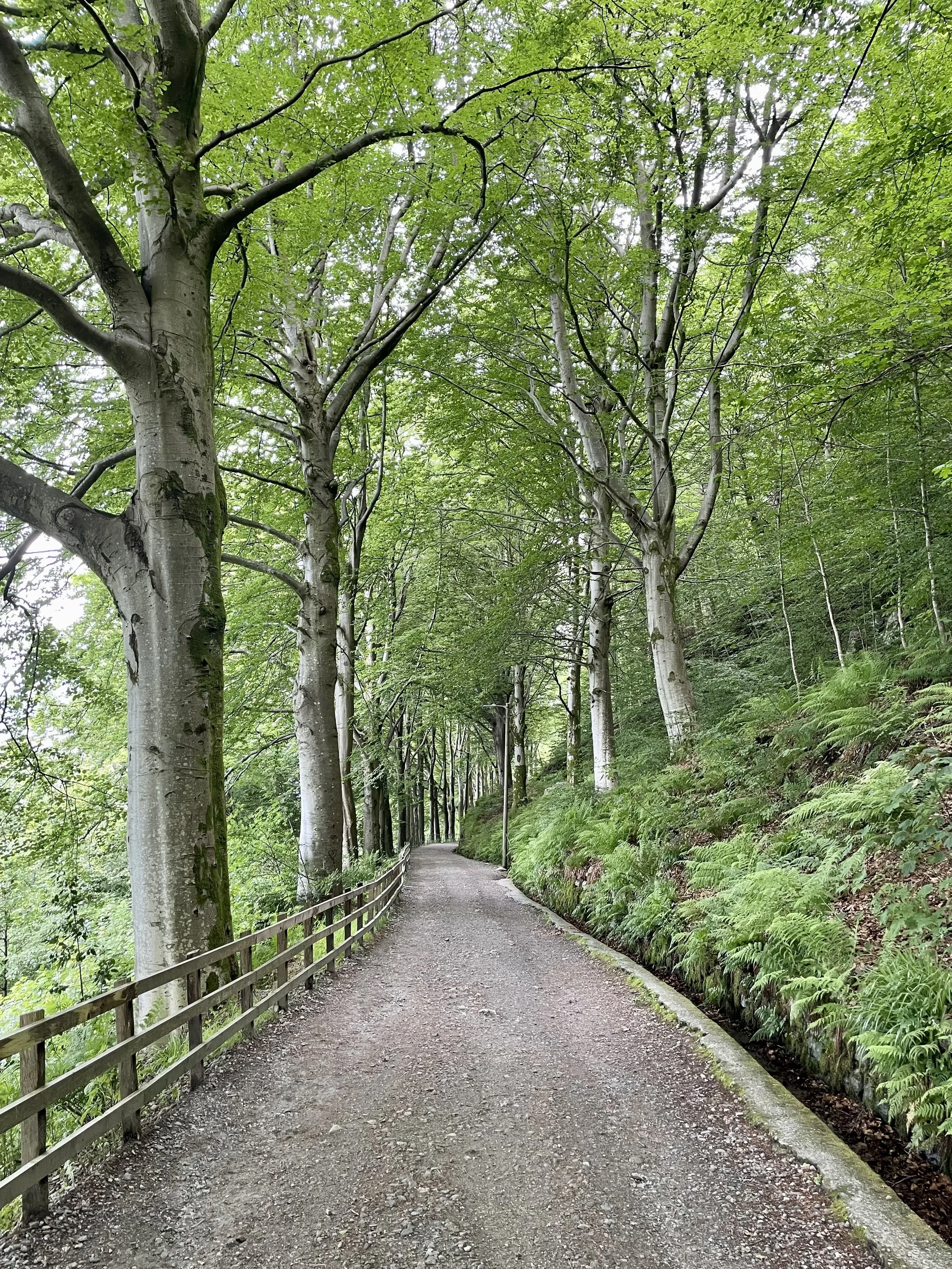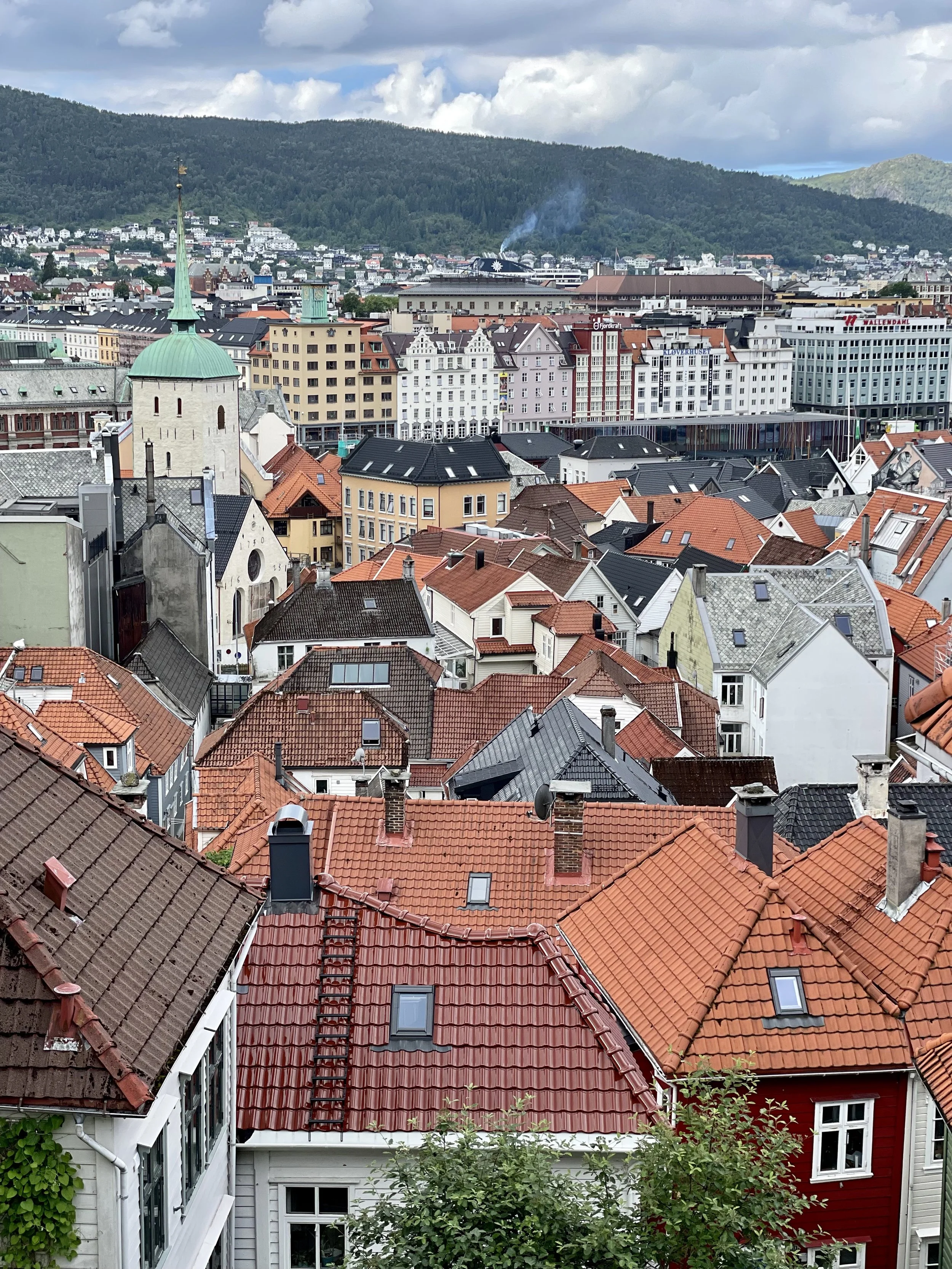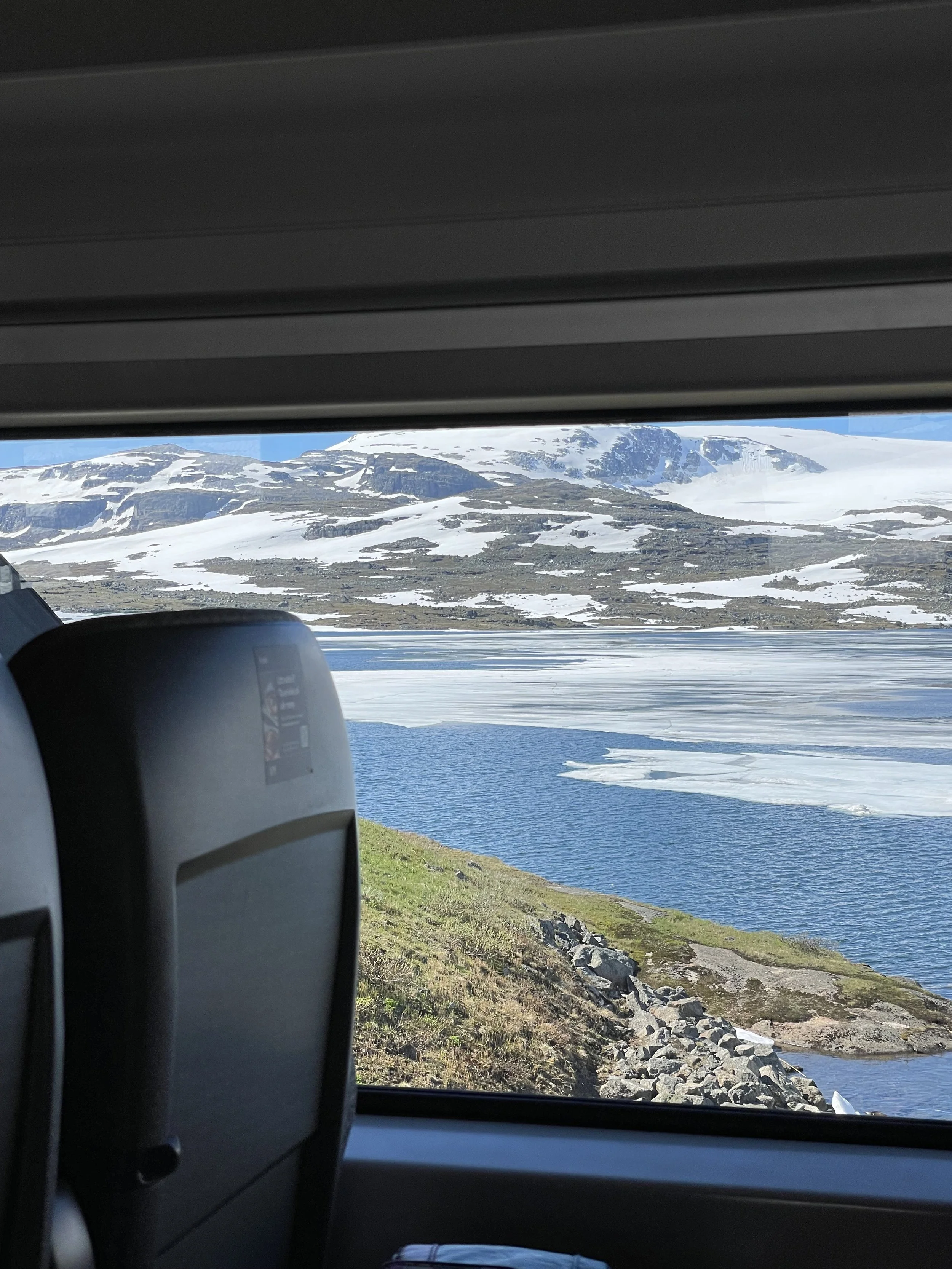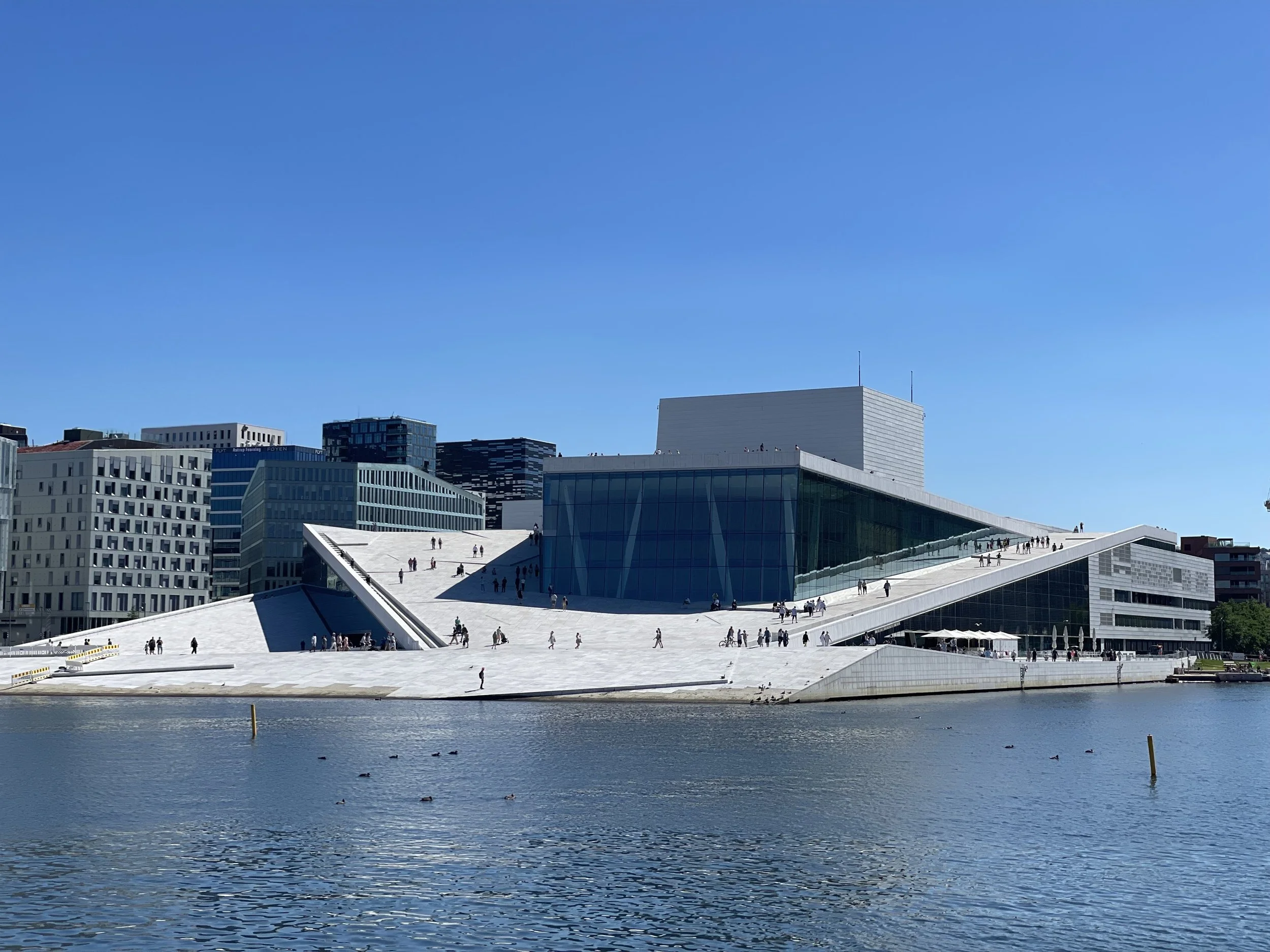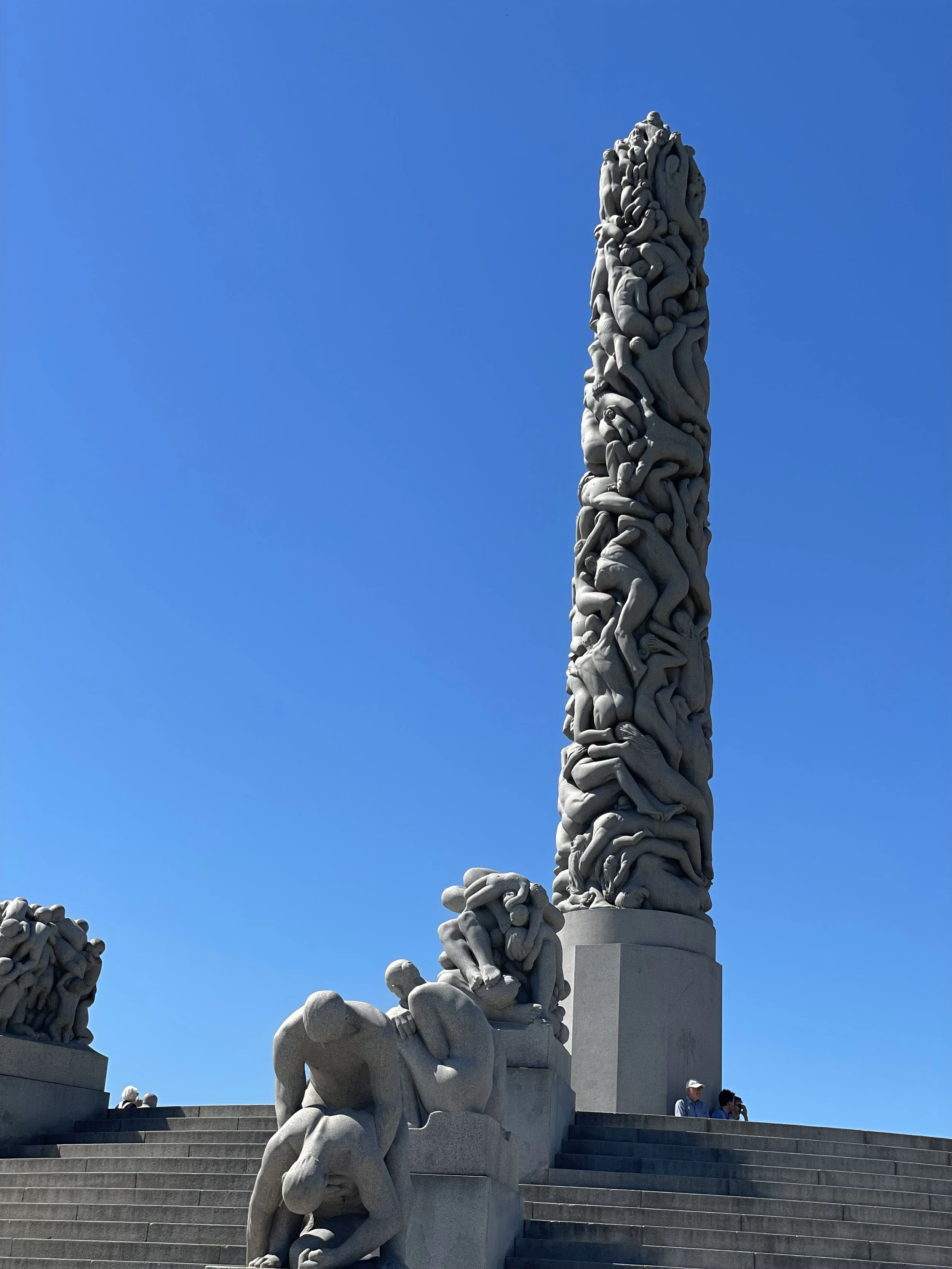Norway is a California-size strip of land known for its spectacular scenery but only 3% of the country is arable. However, Norway pumps millions of barrels of oil to export (3rd largest exporter in world) and uses very little of it themselves. With a population of 4.6 million, it has an awful lot of money, but Norwegians are usually very modest people despite their natural resources and naturally good looks.
DAYS 1 & 2 – Aalesund
The town of Aalesund is spectacularly located on small islands, where the fjords and mountains meet the ocean. Its Art Nouveau architecture was a bit of a surprise, but it gives this town a unique look. It is known to be significant in shipping and fish trade as well as technology and innovative thinking.
We spent our only day on Aalesund walking around town. Or better, hiking around town!
STAY: Hotel Brosundet – once a warehouse for local fisheries, it is now a stylish boutique hotel.
EAT: Bro, Apotekergata (drinks before at Arkivet Bar)
DAYS 3, 4 & 5 – Skodje
We drove to Skodje (only 30 mins away), where we stayed for the next 3 days. We picked this location based on a hotel we wanted to stay at and because there is plenty to do in the area.
On our first day we went on a hike from the hotel, and they provided us with maps and directions.
On our second day, we drove about 2 hours to Geiranger for a fjord boat tour (https://www.geirangerfjord.no/geirangerfjord-rib-7). Along the way we stopped at the Ornesvingen Viewpoint and Flydalsjuvet Scenic Stop.
For our final day, we drove on Atlantic Ocean Road, often described as the world's most beautiful road, as far as the Hulvagen Bridge (about 2.5hrs each way). This trip took us to Molde, a charming town between the fjord and the hills with magnificent views.
STAY: Storfjord Hotel – hand-built log buildings with grass roofs at the edge of a forest. It’s a luxurious hotel and offers gorgeous views. One of my favorite hotels in this whole trip!
DAYS 6, 7 & 8: Ballstad, Lofoten
We flew to Leknes in the Lofoten Archipelago, and drove to Ballstad, one of the islands’ largest fishing villages. It has a good selection of harborside restaurants and cafes.
On our second day, we did one of the hardest and most spectacular hikes ever.
Mt Skottind Full Day Tour (https://hattvikalodge.no/activity/the-lofoten-islands-from-the-sweetspot-of-ballstad/).
The adventure started at the dock in Hattvika at 4pm and we kayaked for about one hour to the base of a mountain. We had to wear dry suits because if the kayak capsized, the water is very cold, and you want to avoid hypothermia. We left the kayaks over some rocks and removed the dry suits so we could start our very steep climb towards the summit of Skottind, the towering mountain of Ballstad. It was 9pm by the time we got to the top and the sun was still out as it never gets dark this far north in the summertime. The view was beyond spectacular in all directions. It was an out and back hike, and then another kayak journey back to Hattviga, where we arrived after midnight, with the sun still out. Incredible!
STAY: Hattviga Lodge - located in an authentic fisherman’s area with newly rebuilt fishermen cottages (what is known as a rorbuer accommodation).
DAYS 9, 10 & 11: Reine, lofoten
A much-photographed village of red and white fishing cottages against a background of tall mountains and blue sea. A big attraction is the 1-kilometer, 1,566-step stairway up nearby Reinebringen for amazing views of the town. Other great hikes in the area are:
· Munken Hike (https://www.68north.com/outdoors/hiking-munken/ )
· Ryten/Kvalvika Beach Hike (https://www.68north.com/outdoors/hiking-ryten/)
We also got to visit Å, another small village nearby, at the southern end of the archipelago at the terminus of Route E10. Dating to the mid-16th century, this small fiskevær may have a one-letter name but it’s home to two museums devoted to the islands’ stock in trade: the Lofoten Stockfish Museum, located in a former fish landing station, and the Norwegian Fishing Village Museum.
STAY: Sea View Cabin – nothing super special, but on the water’s edge with great views of Reine.
EAT: Anitas Seafood, Maren Anna
DAYS 12-16: holmen, lofoten
We drove our friends to the airport in Leknes and along the way visited Nusfjord, one of Lofoten’s oldest and best-preserved fishing villages. It’s said the village general store looks like it did on opening day over a century ago. There’s a noticeable lack of modern architecture in these parts, preserving the authentic feel.
After the airport drop, we made our way back to Å, where we joined a 4 - night event called The Kitchen on the Edge of the World - https://www.holmenlofoten.no/kitchen-on-the-edge-lofoten/ - at a lovely family-owned and run inn called Holmen. It is surrounded by sea and mountains, a truly breathtaking scenery. We unfortunately got Covid for the first time during this event and had to miss part of it while stuck in our room. A room with the most incredible view ever, mind you, but still stuck inside.
Every night the guest chef, in our case Margot Henderson from Rochelle Canteen in London, cooked a delicious multicourse dinner with ingredients foraged, caught, fished or grown nearby. And during the day we got to go on hikes, fishing expeditions, cooking classes, wood carving classes, and a clam bake in an island nearby.
DAYS 16-19: Bergen
Bergen was our next destination. Surrounded by the Seven Mountains, Bergen has no shortage of hikes. While Mount Floyen is undoubtedly the most accessible, and thereby popular, Mount Ulriken (the highest of the seven) offers the best scenery. Our favorite thing was to walk from the port area up the hill towards Mount Floyen through the residential neighborhoods and parks. While very steep, it was an amazing way to experience Bergen.
A visit to Bryggen - Bergen’s historic district lined with gabled wooden buildings and incredibly narrow alleyways – while probably the most popular thing to do, is worth a stop.
We also took a tour called Beautiful Nordnes: Wooden Houses, Secret Alleys & Untold Stories and it was a great way to see another side of Bergen we probably would not have seen on our own.
STAY: Bergen Bors Hotel - set in the glorious 19th-century Renaissance Revival building that once housed Bergen’s former stock exchange and by the city’s famous fish market, this is a beautiful hotel.
EAT: Colonialen Litteraturhuset (Brasseriet), Colonialen Kranen, Restaurant 1877
DAYS 19-21: oslo
We took a beautiful train ride from Bergen to our final destination in Norway – Oslo. It took much longer than a flight would have, but it’s worth it for the scenery you get to see along the way.
We were in Oslo during a heat wave, so the city was incredibly alive and we got to bike everywhere.
Some of our stops:
Munch Gallery – not a very large museum but one of the best I’ve ever been to. Very well curated and the architecture is great.
Walk along the water and make your way to: Astrup Fearnley Museum – contemporary art museum
The Vigeland Park – beautiful park with over 100 sculptures of human figures in all sorts of different and sometimes perplexing poses.
Frogner Neighborhood – worth walking around
STAY: Amerikalinjen - conveniently located right next to the train station and walking distance to many of Oslo’s attractions including the Munch Gallery and the Opera.
Hotel Sommerro – located in Frogner, one of the loveliest neighborhoods in Oslo.
EAT: Kolonialen (cozy, neighborhood restaurant, adjacent to a renowned home-design shop, which explains the pitch-perfect décor. The chalkboard menu is limited to a handful of dishes that are deceptively complex and delicious) Katla (seat at the bar, they don't take reservations). The Little Pickle (unassuming neighborhood restaurant with a welcoming atmosphere and staff, and delicious food)
